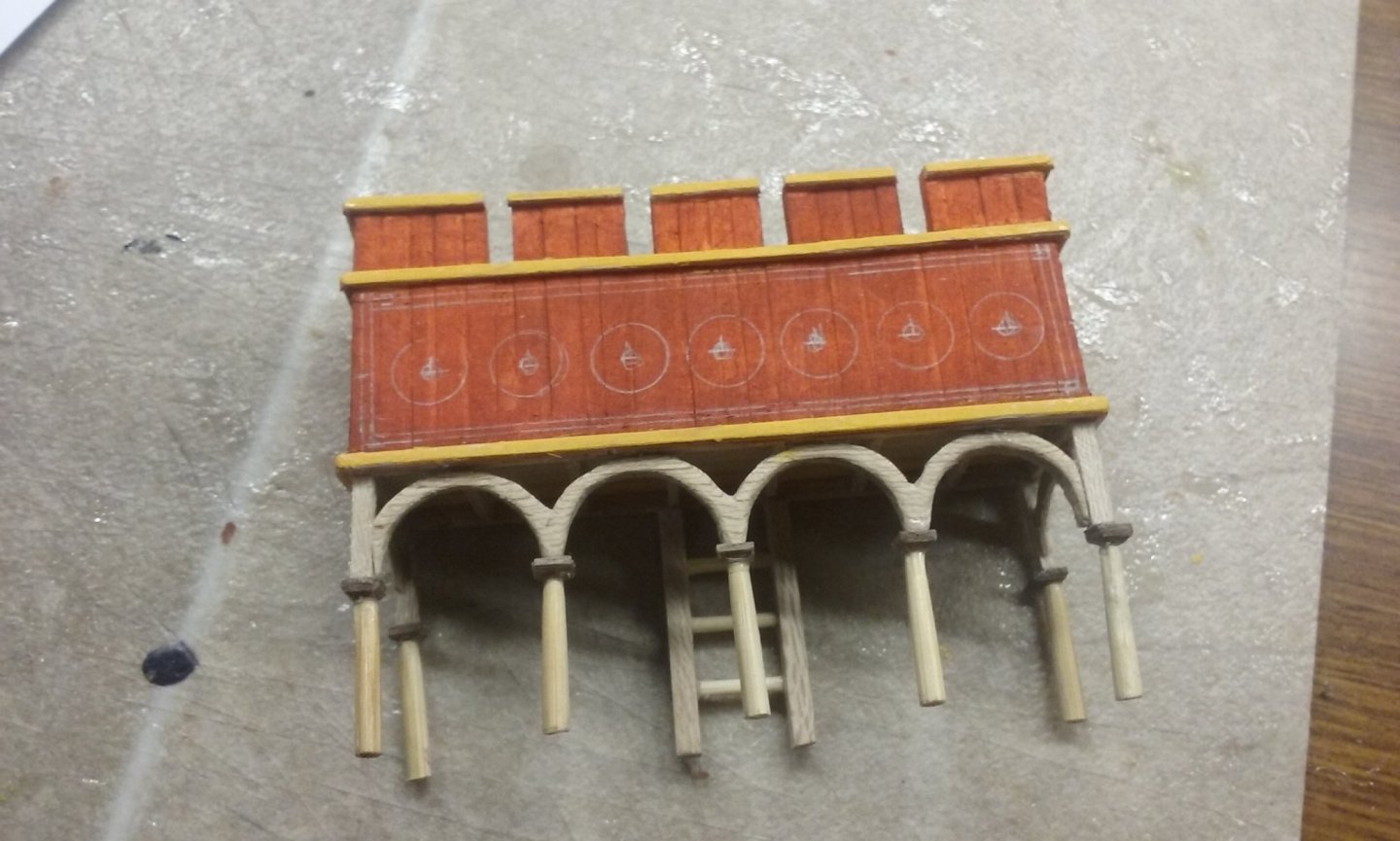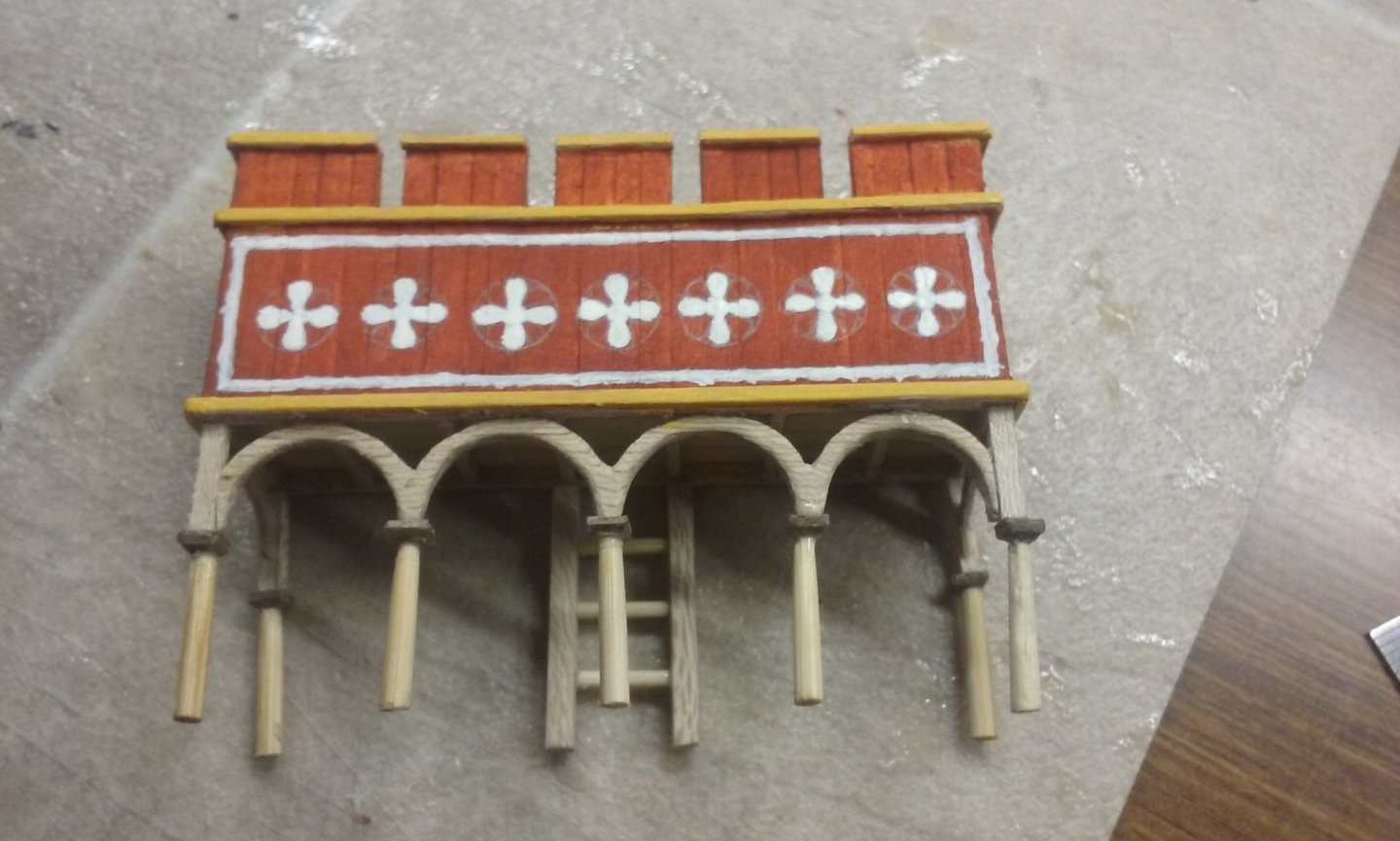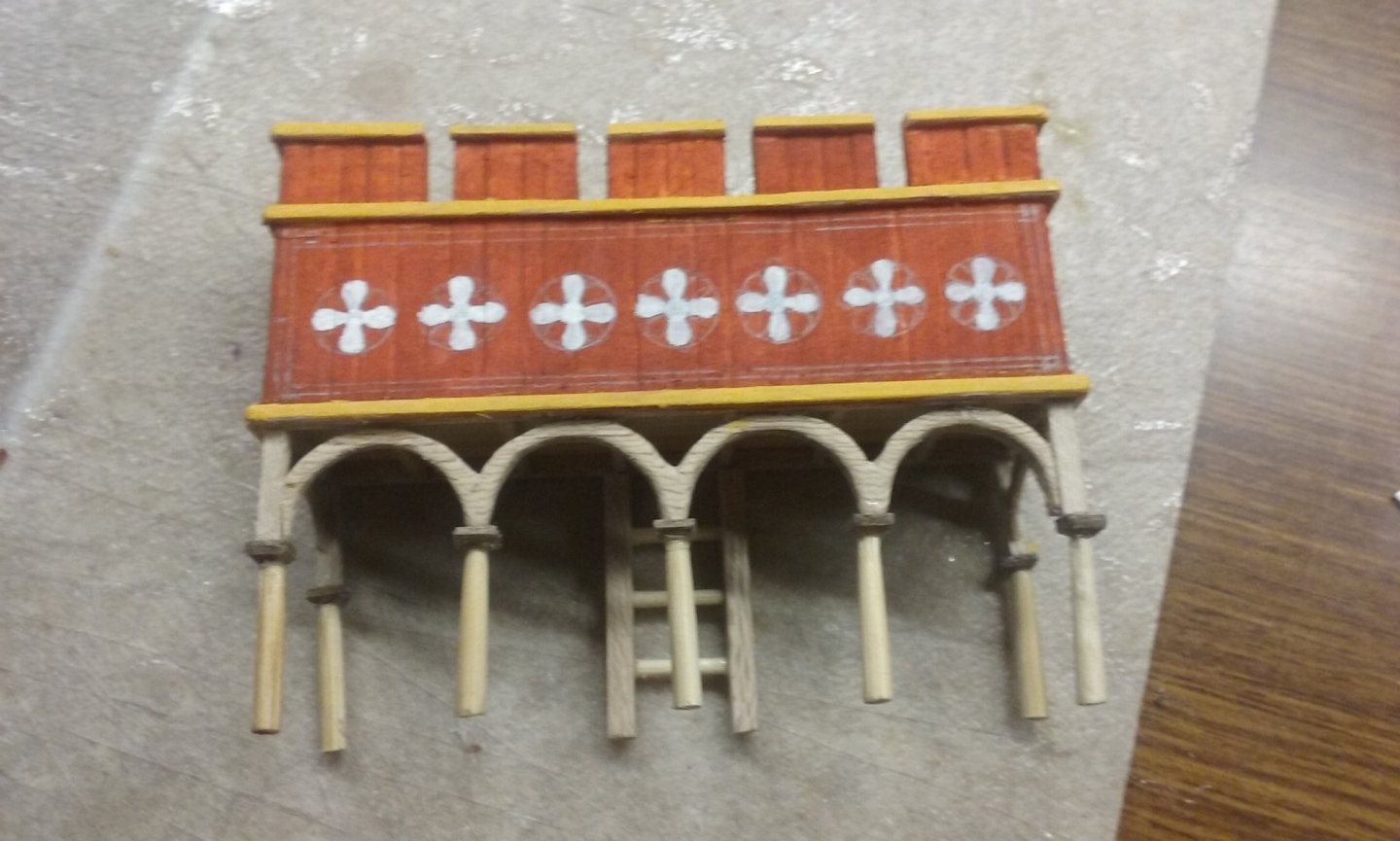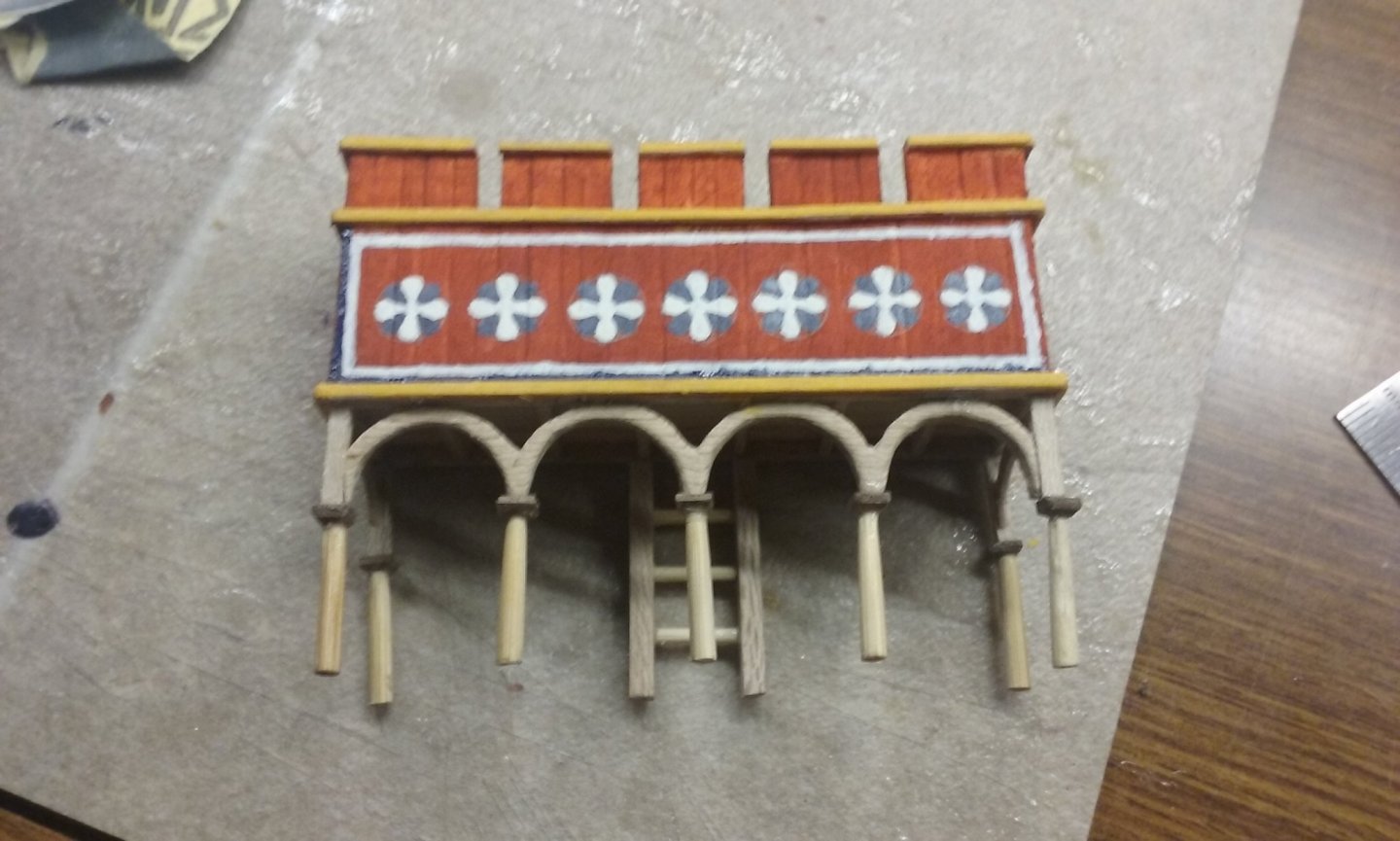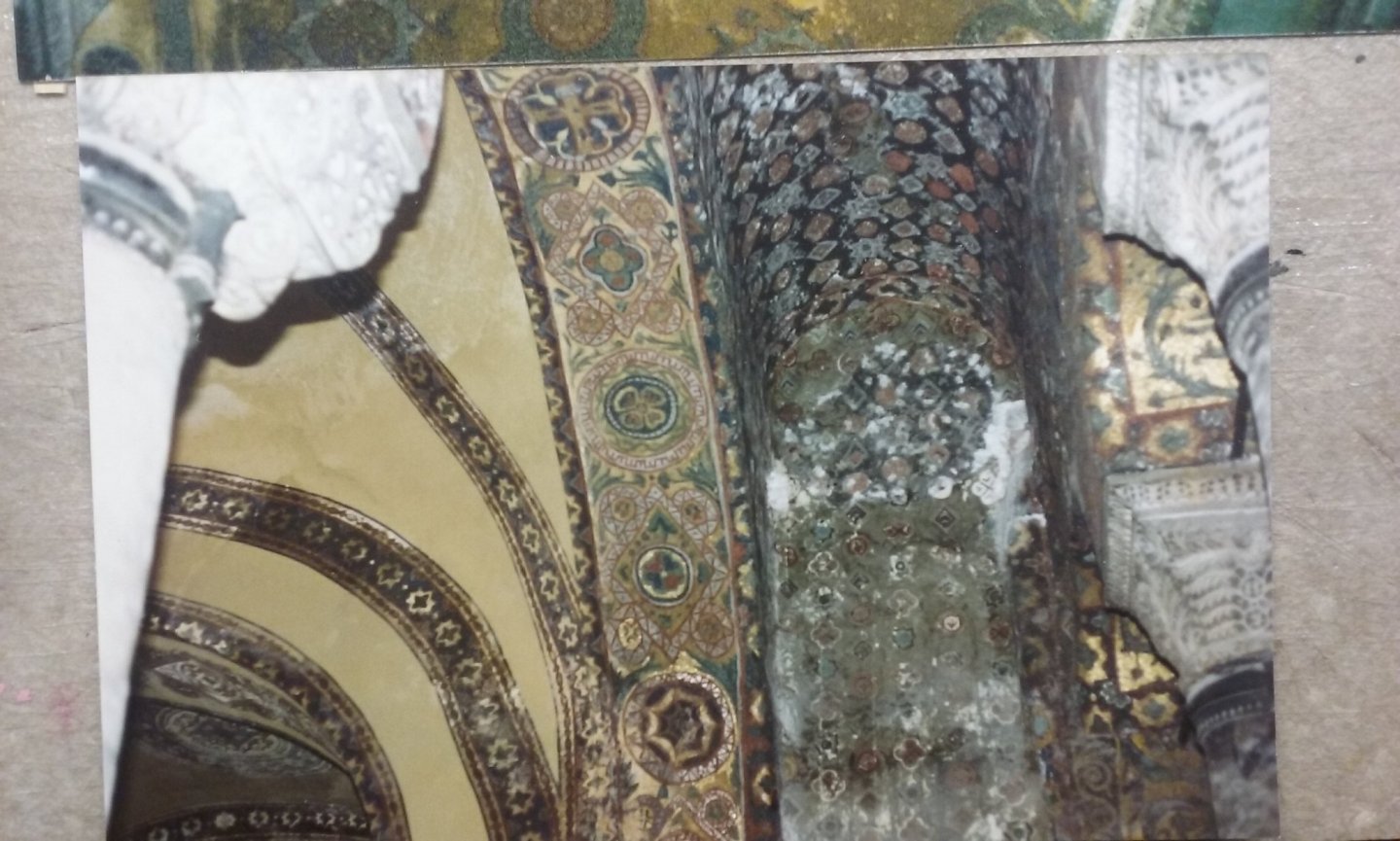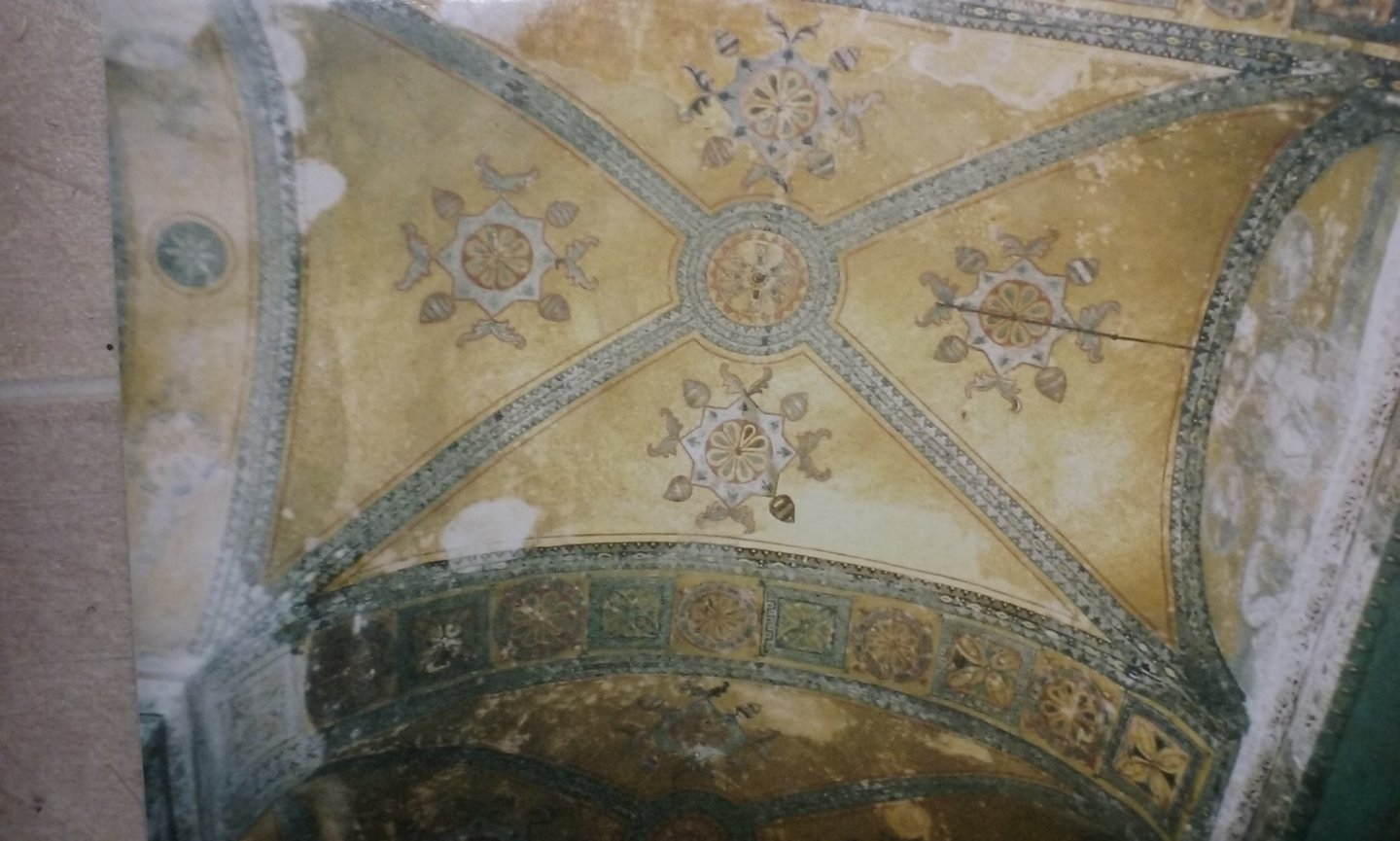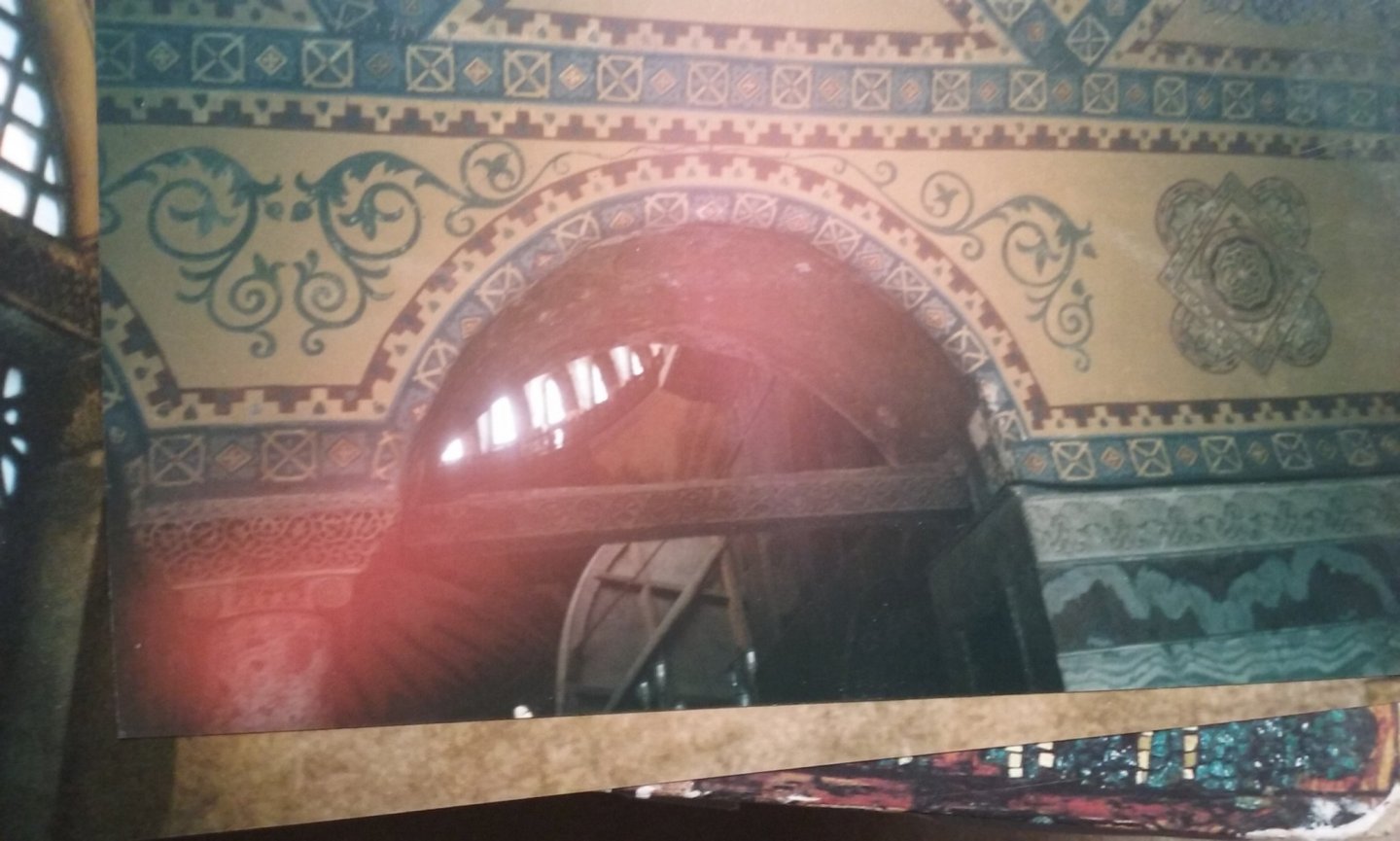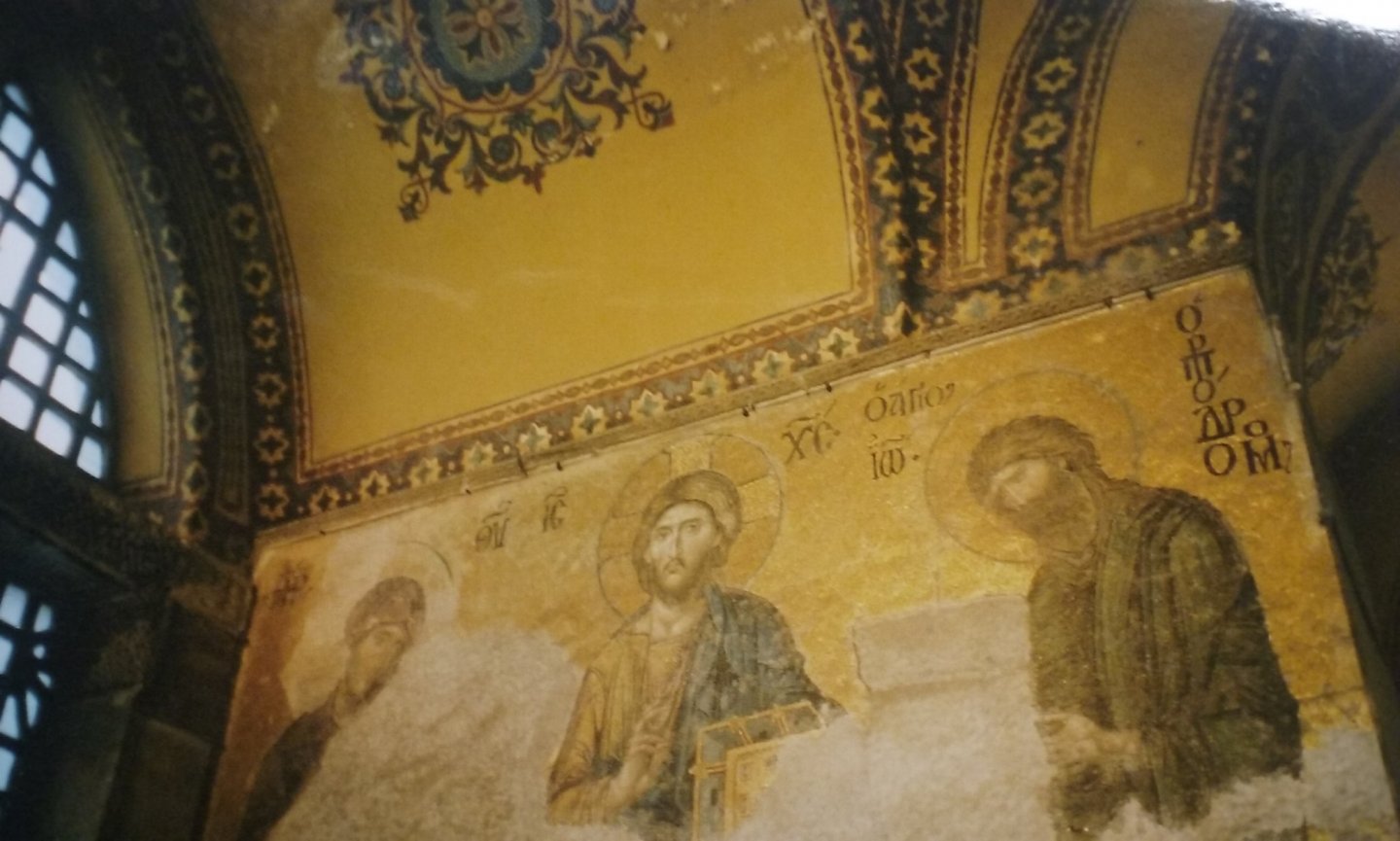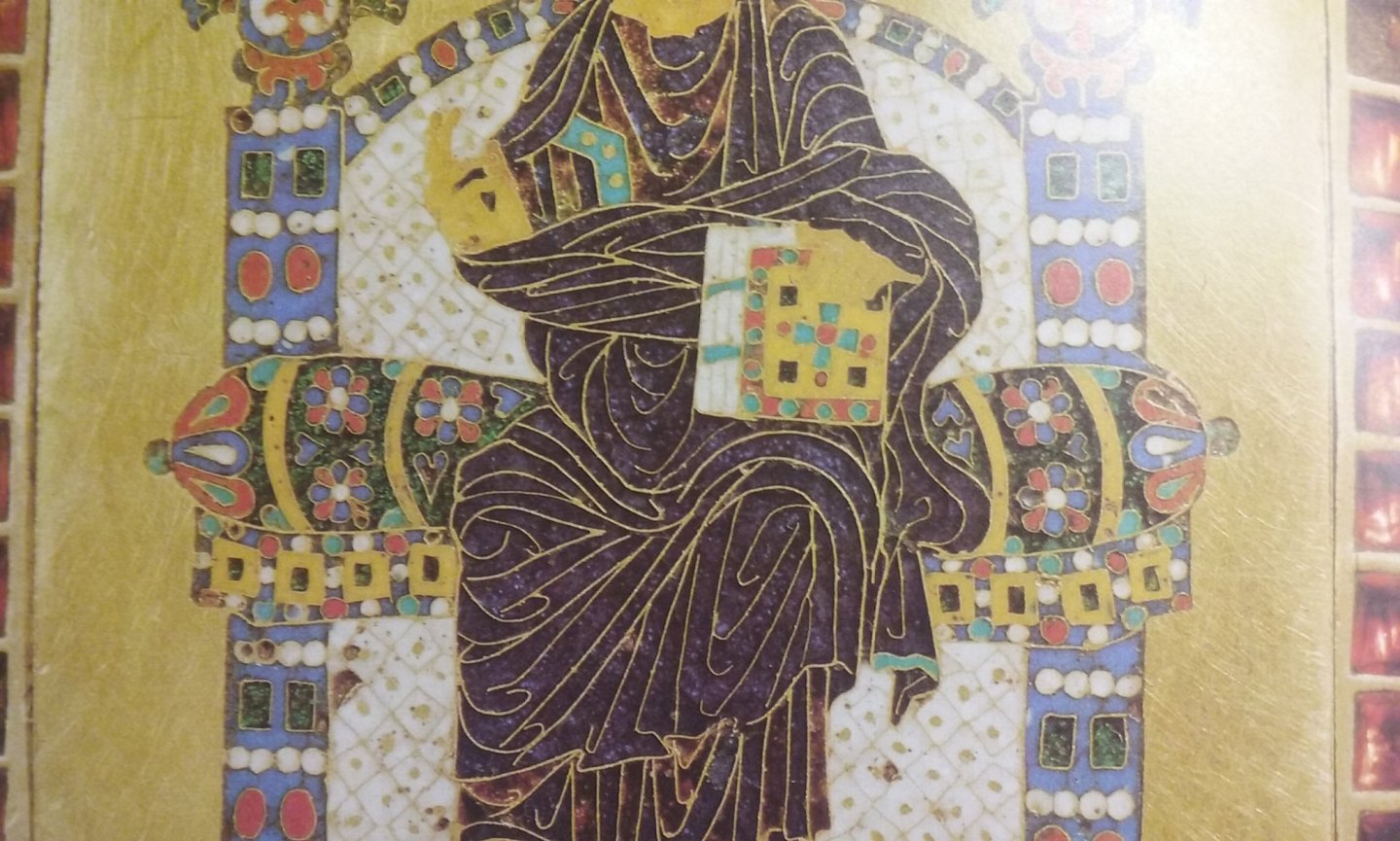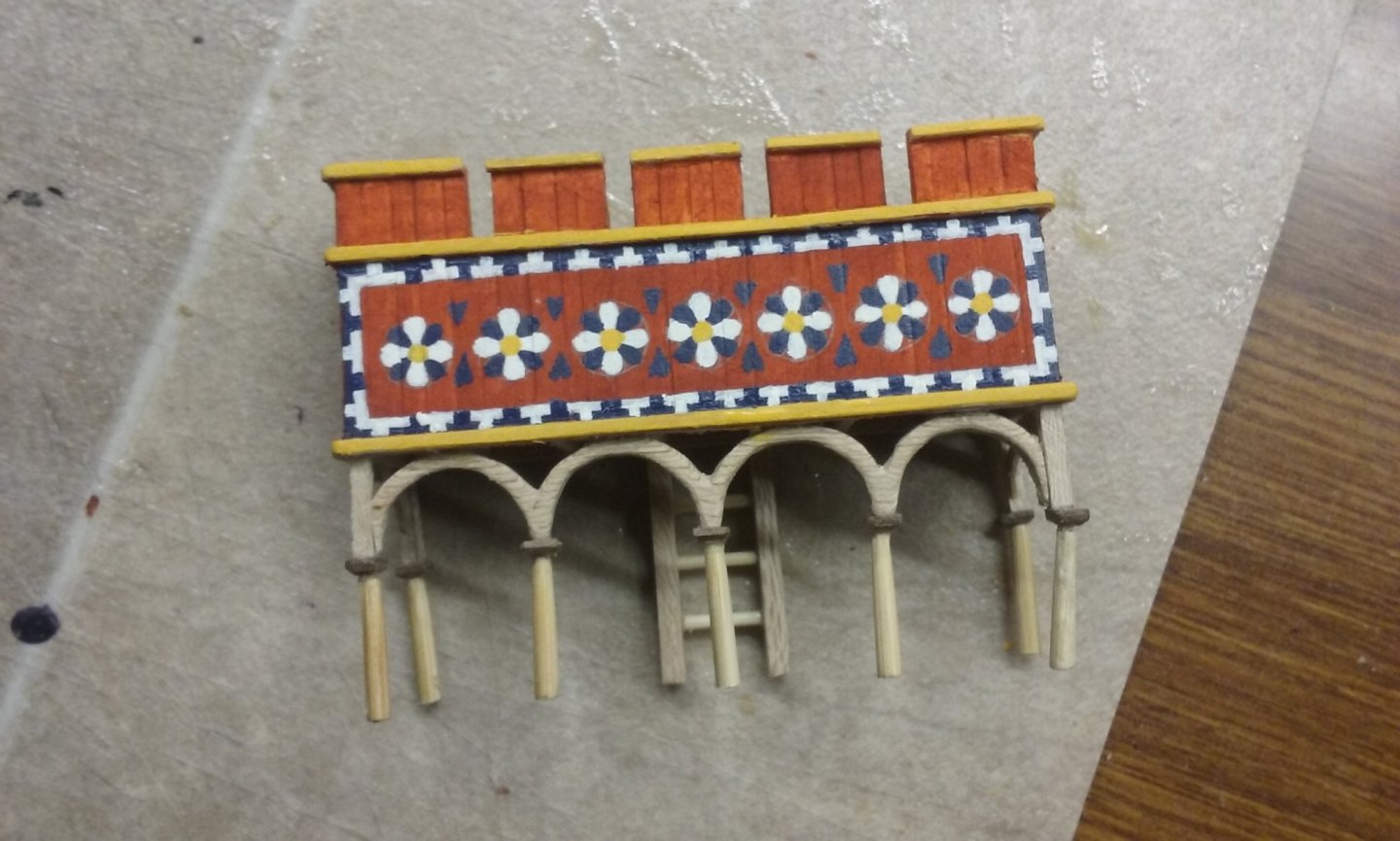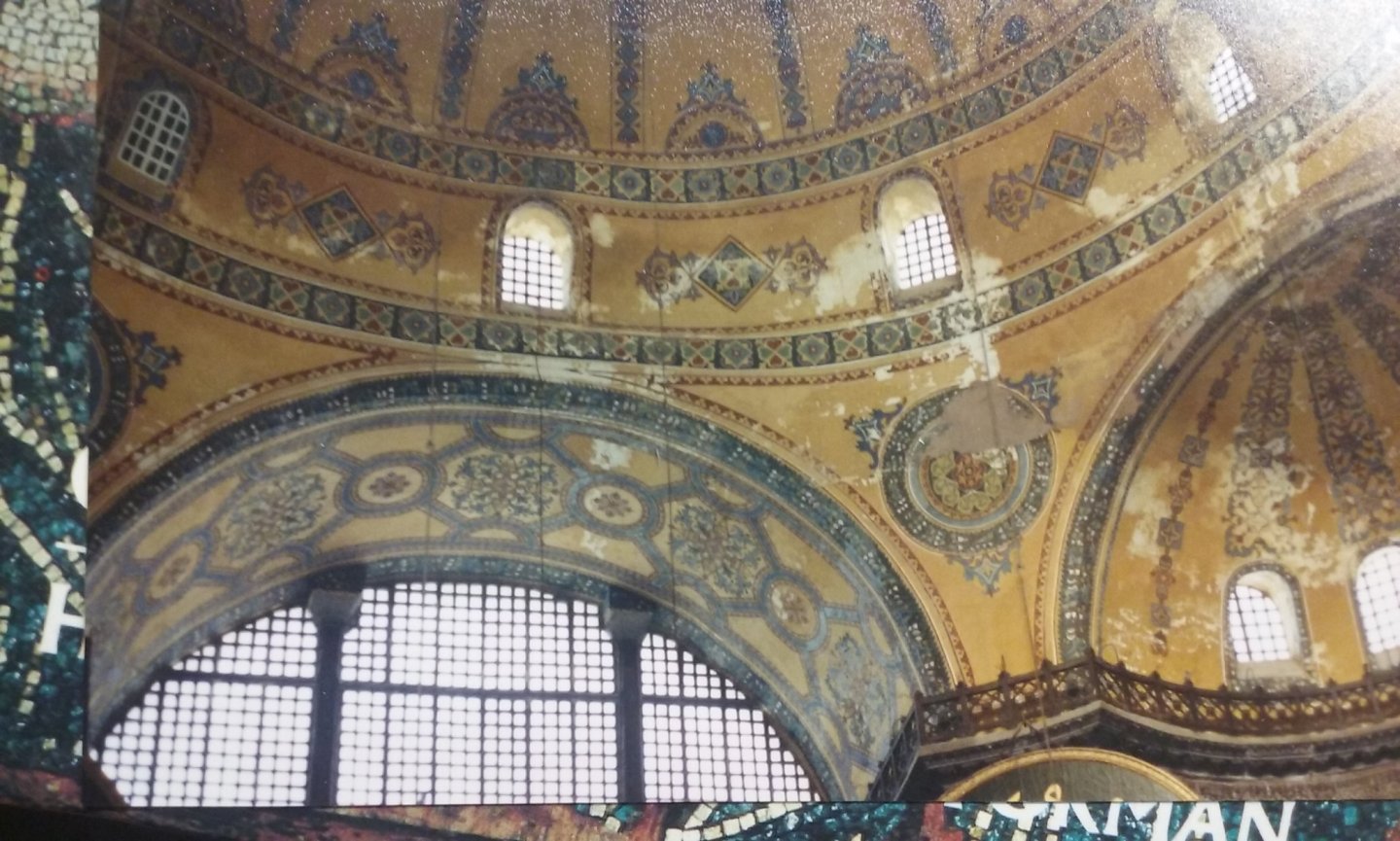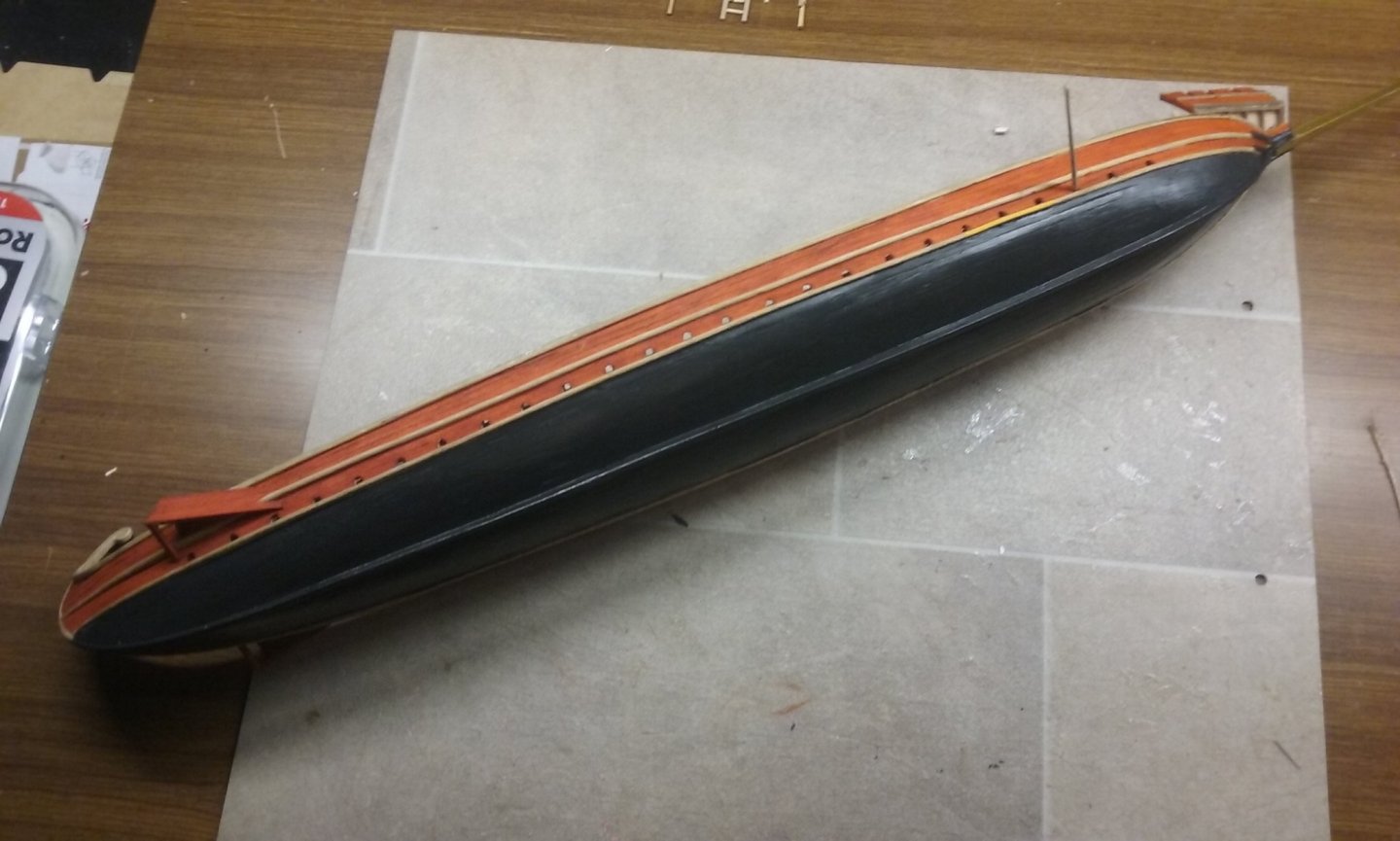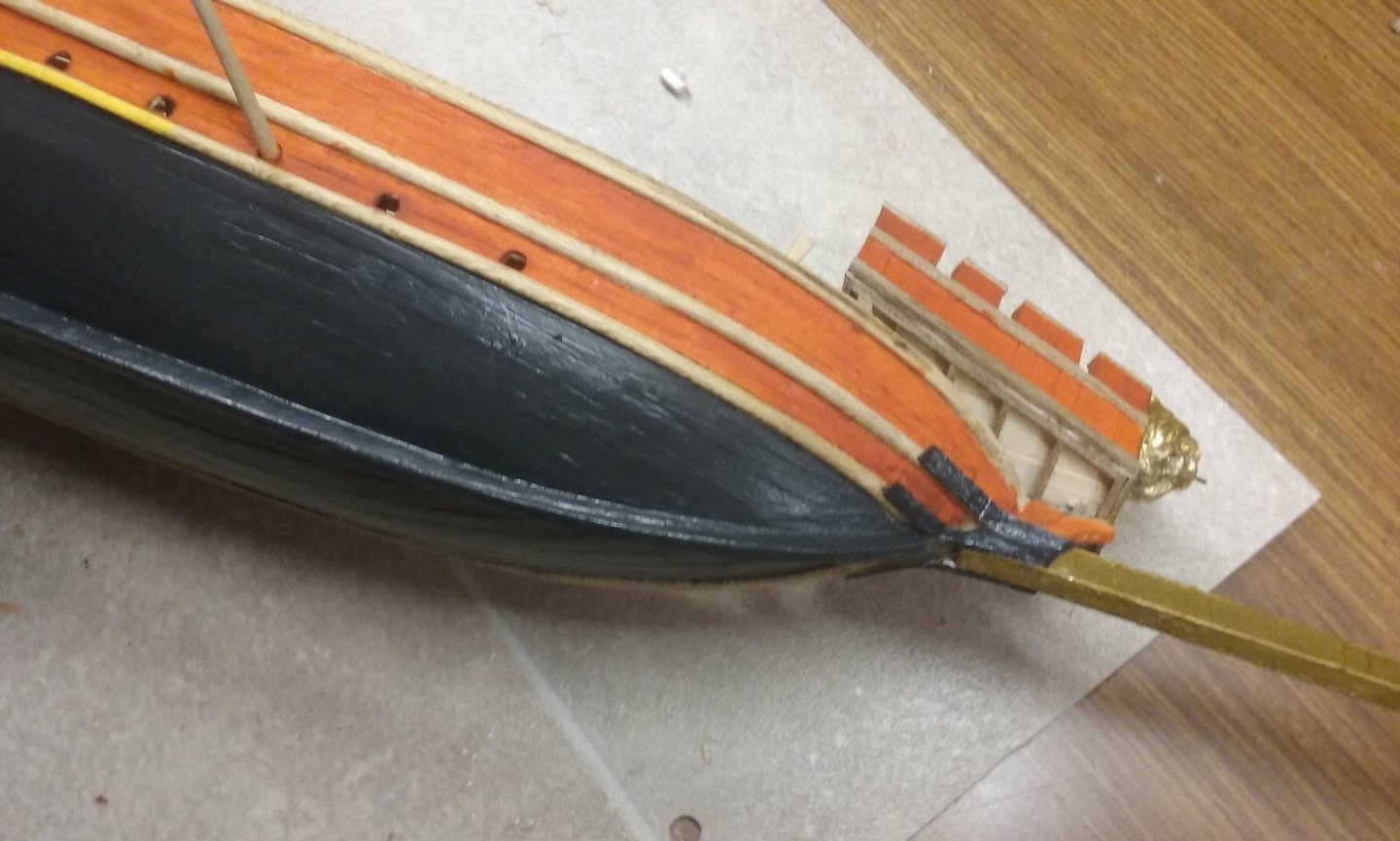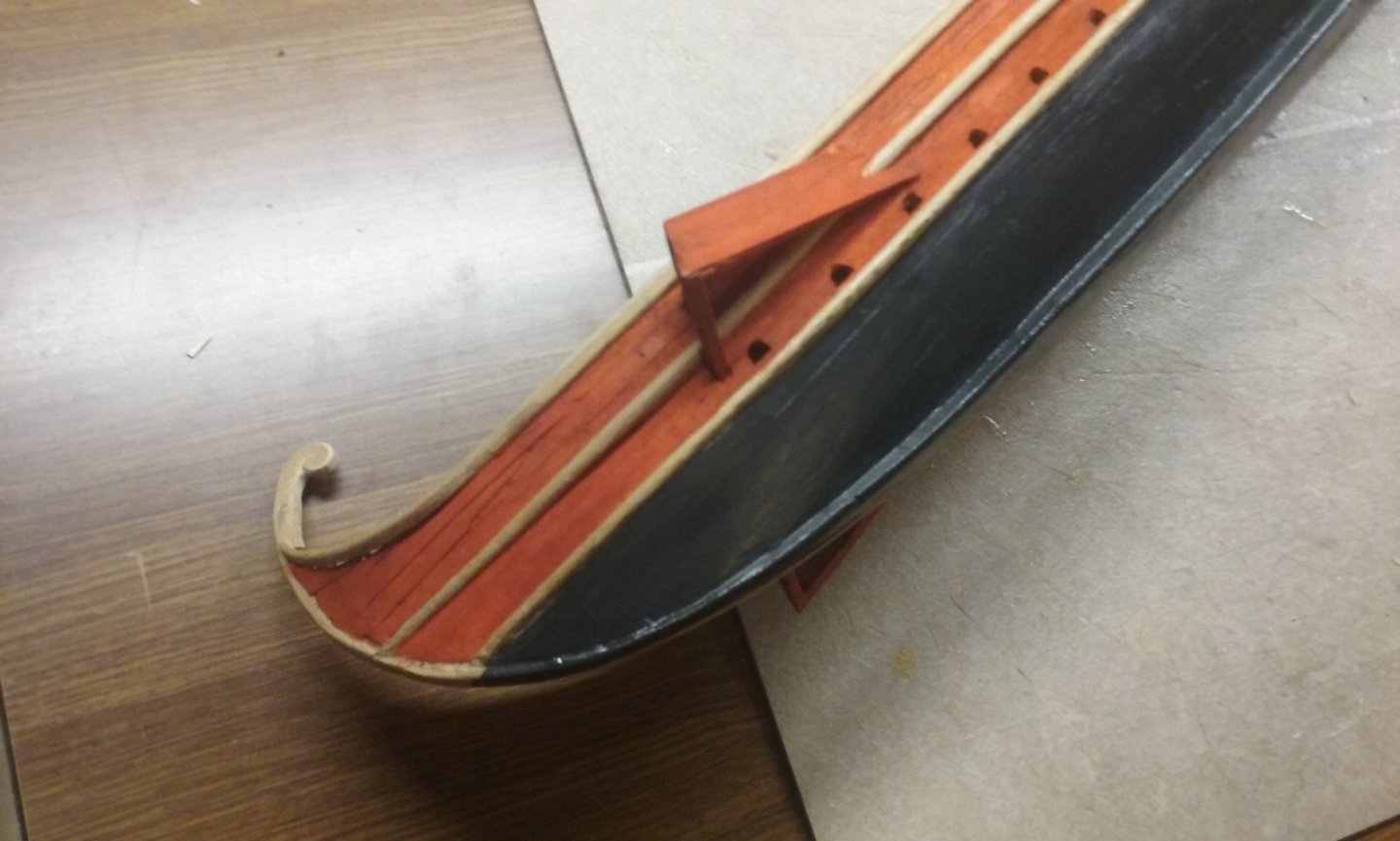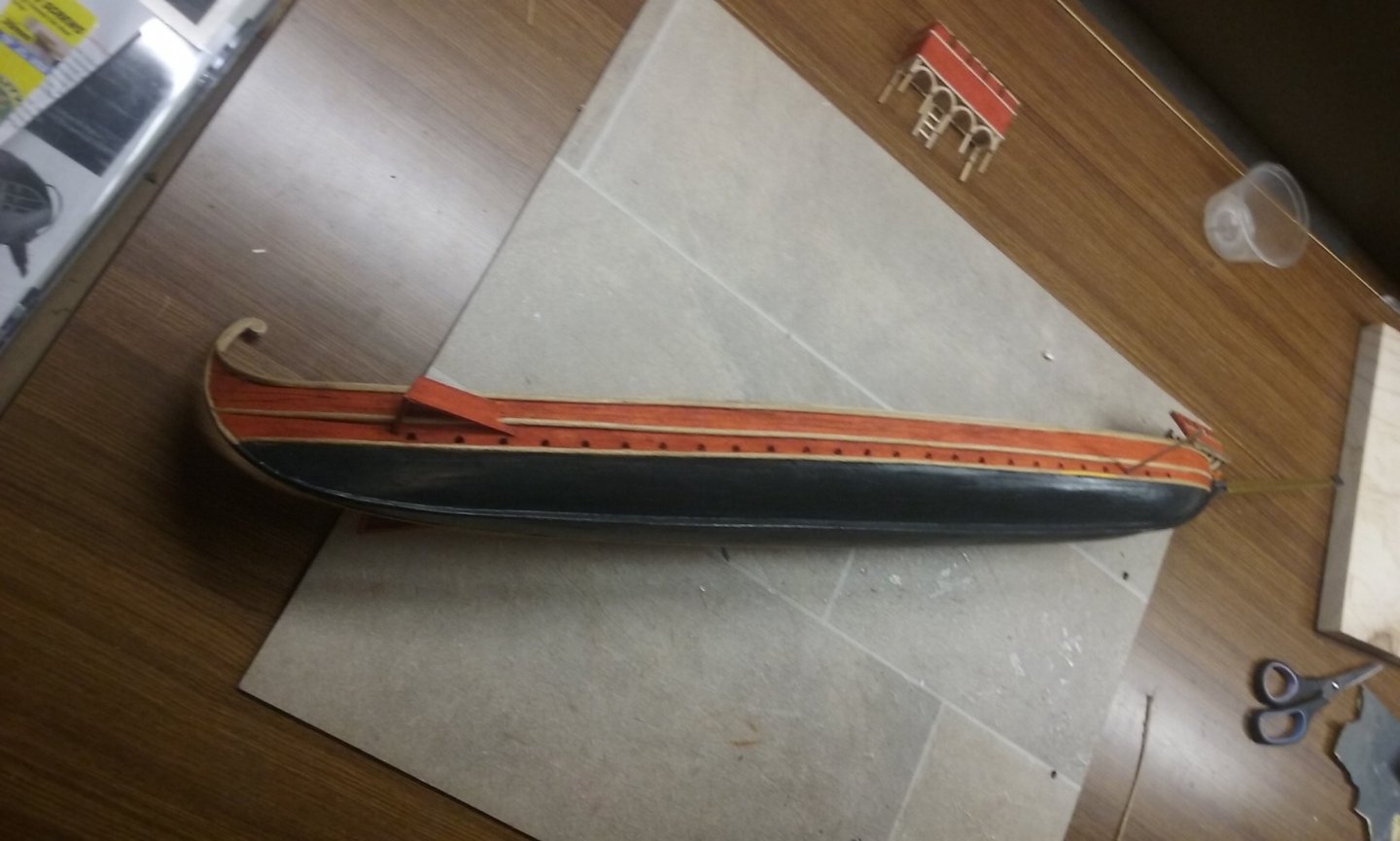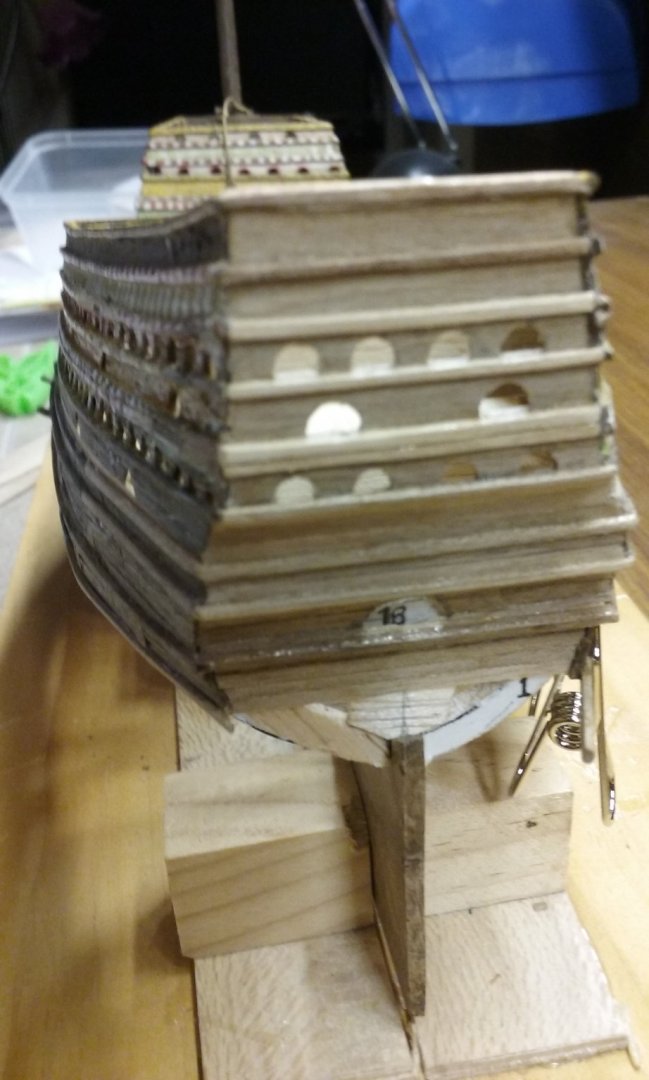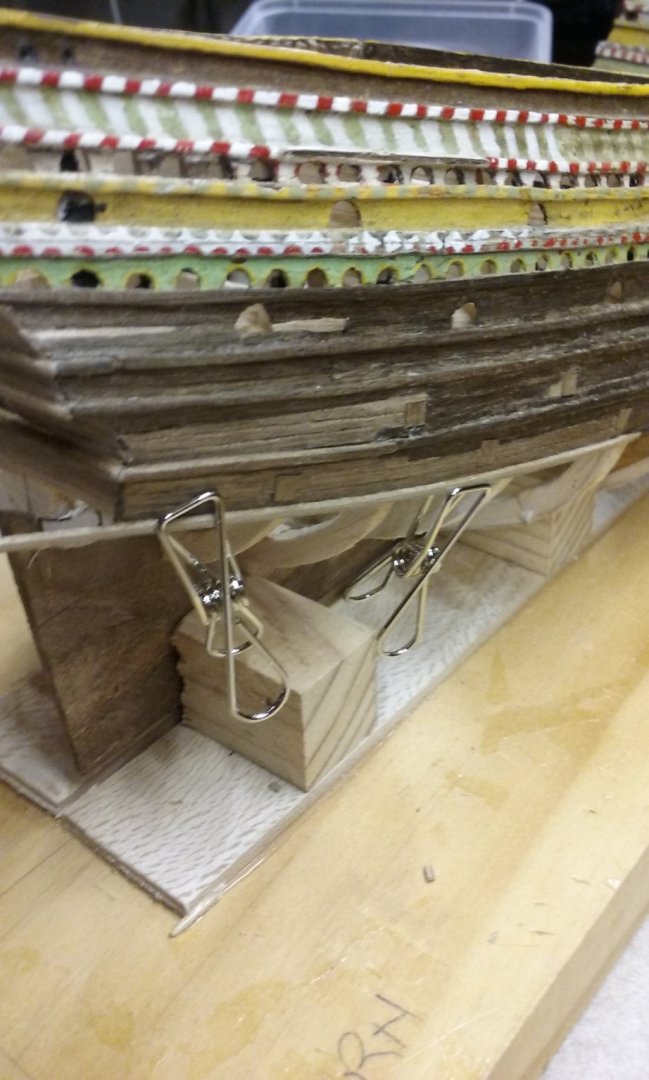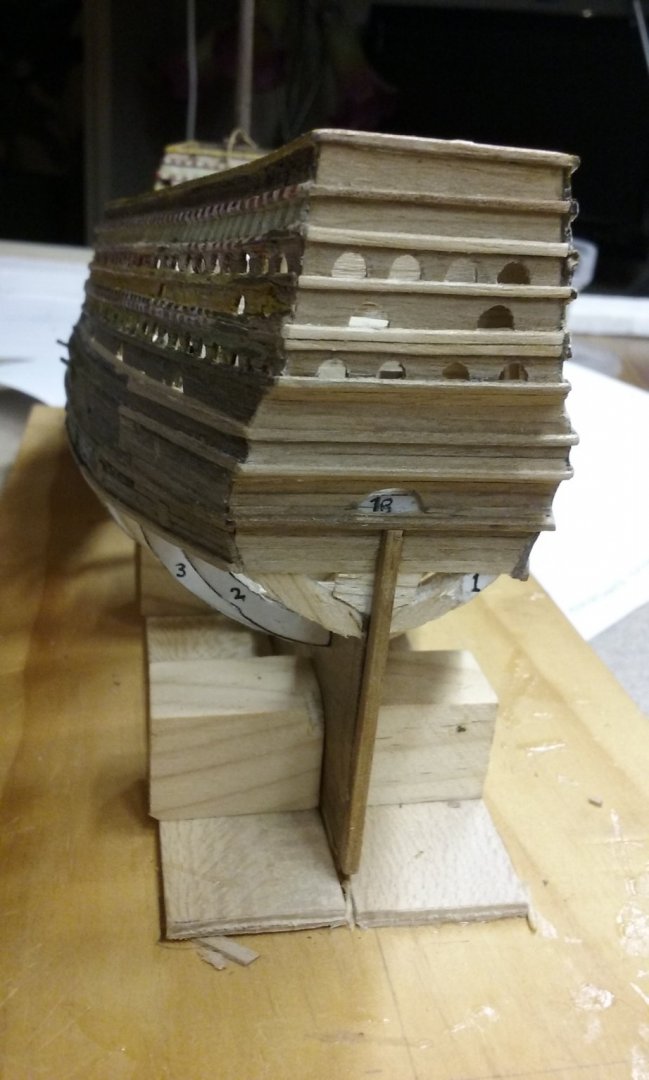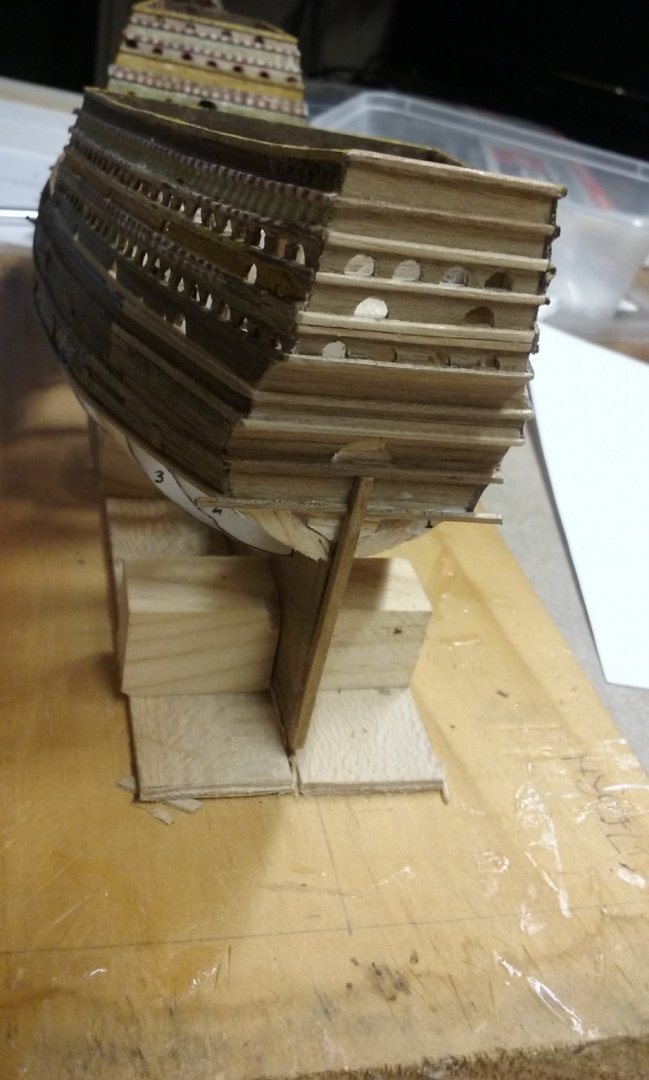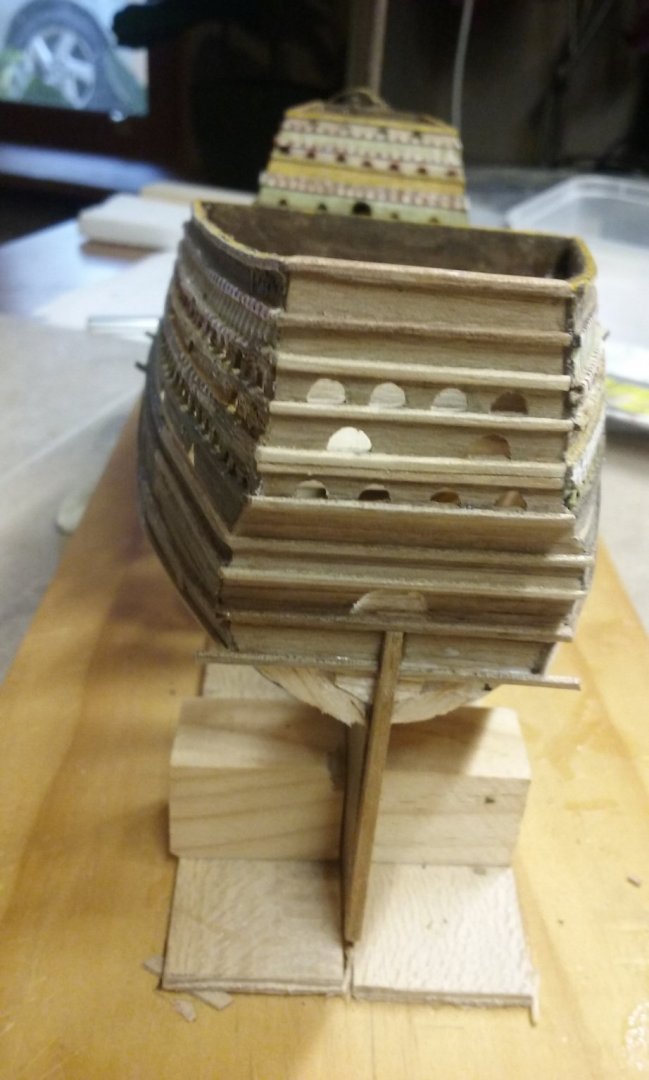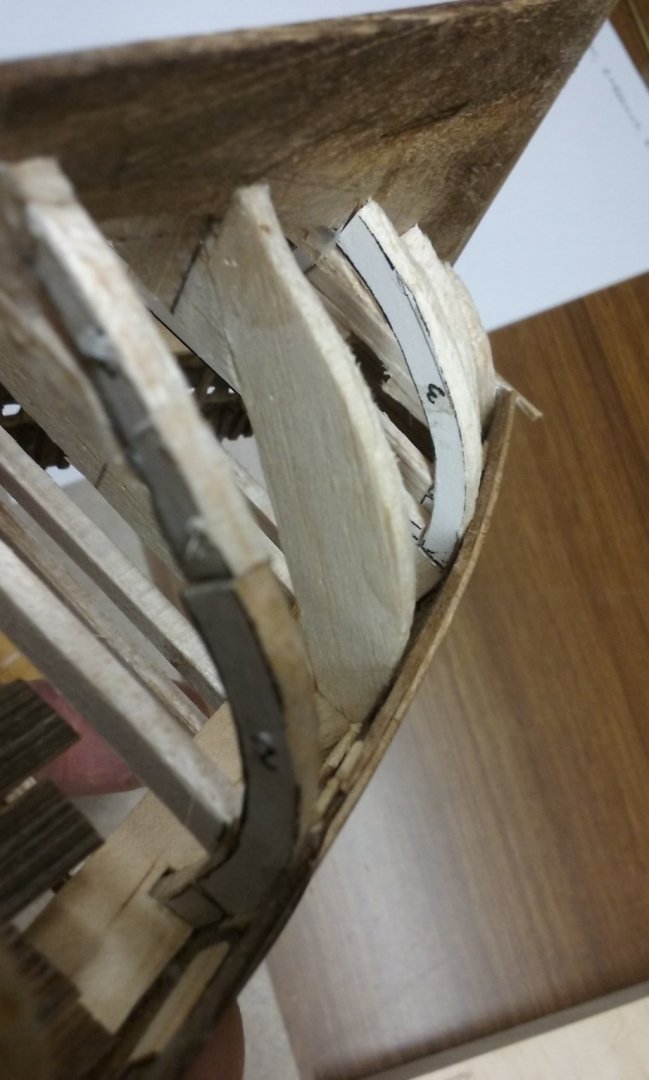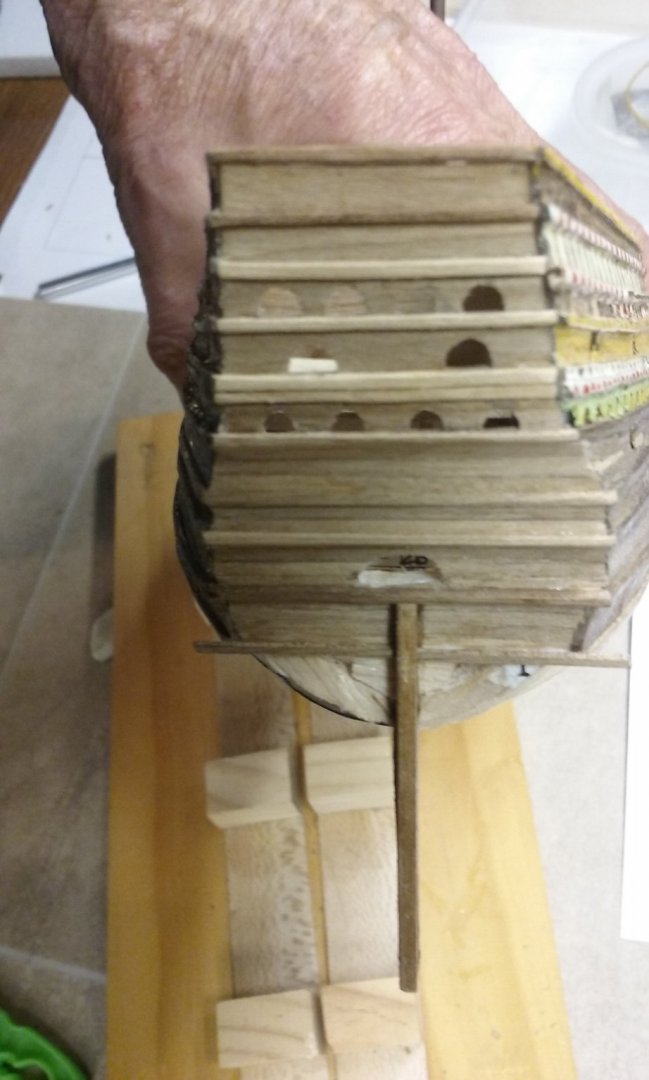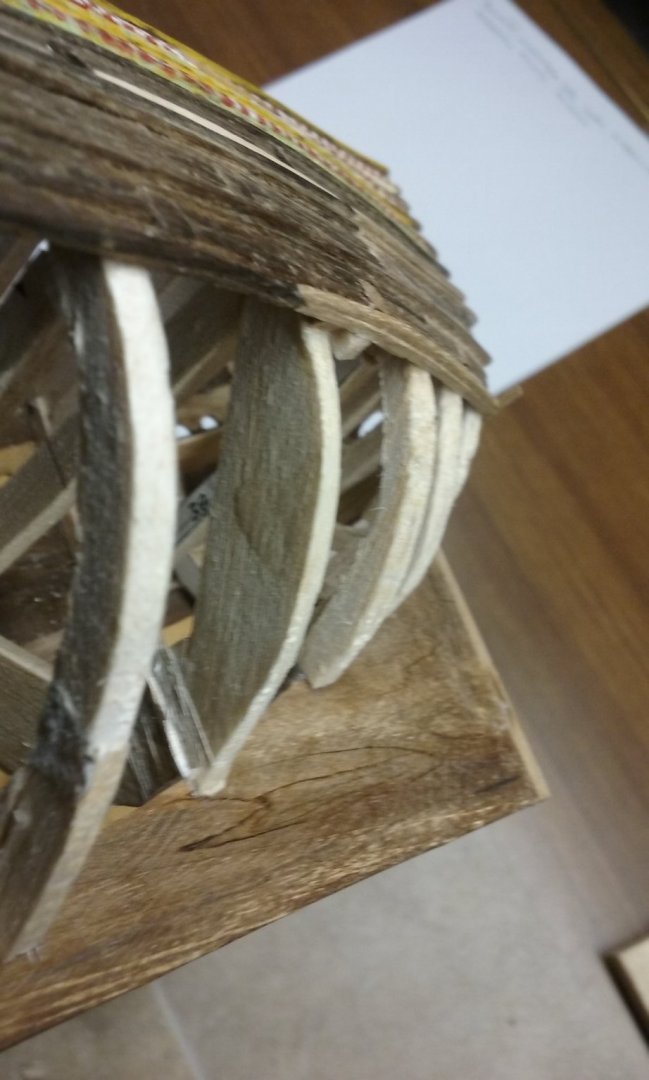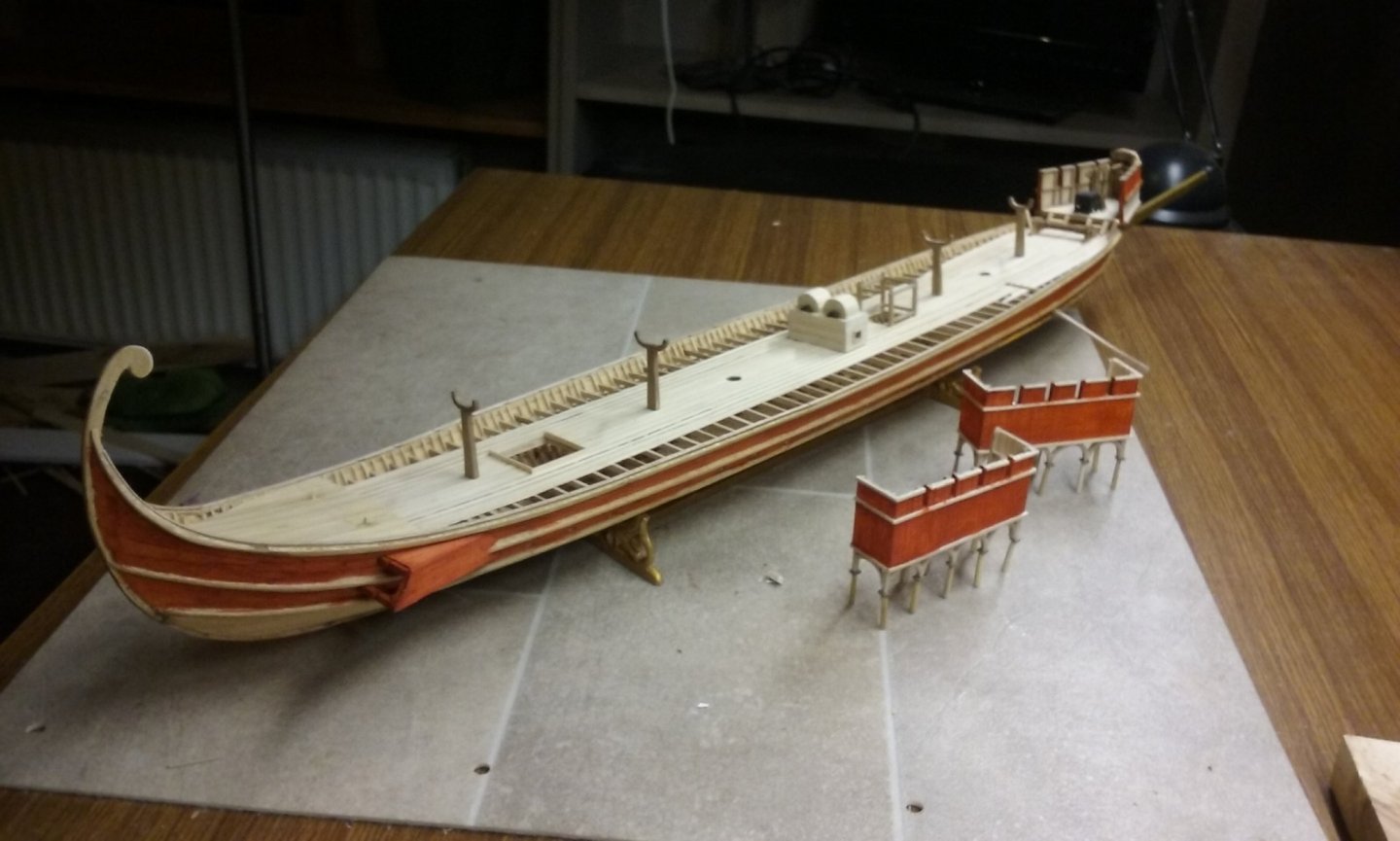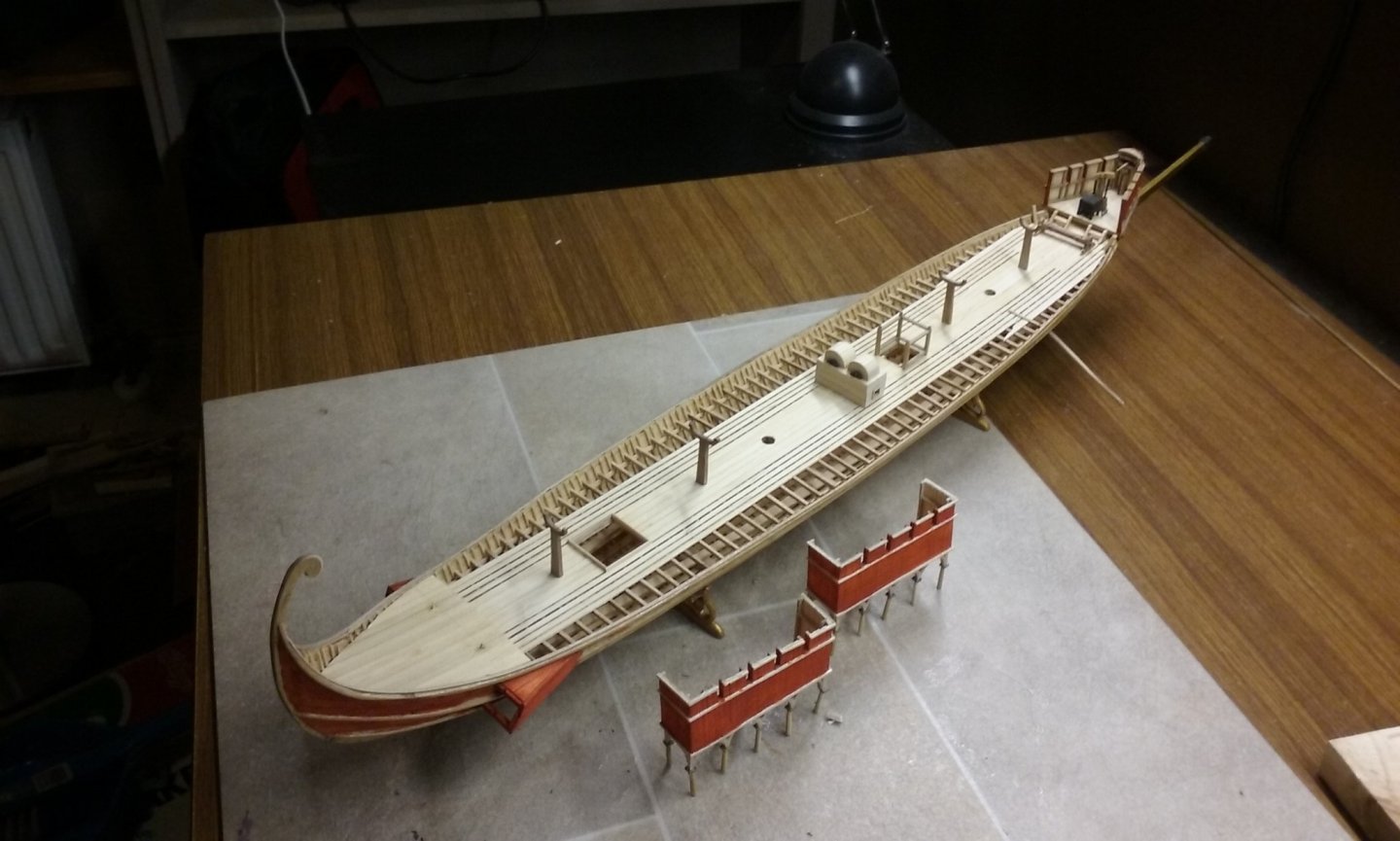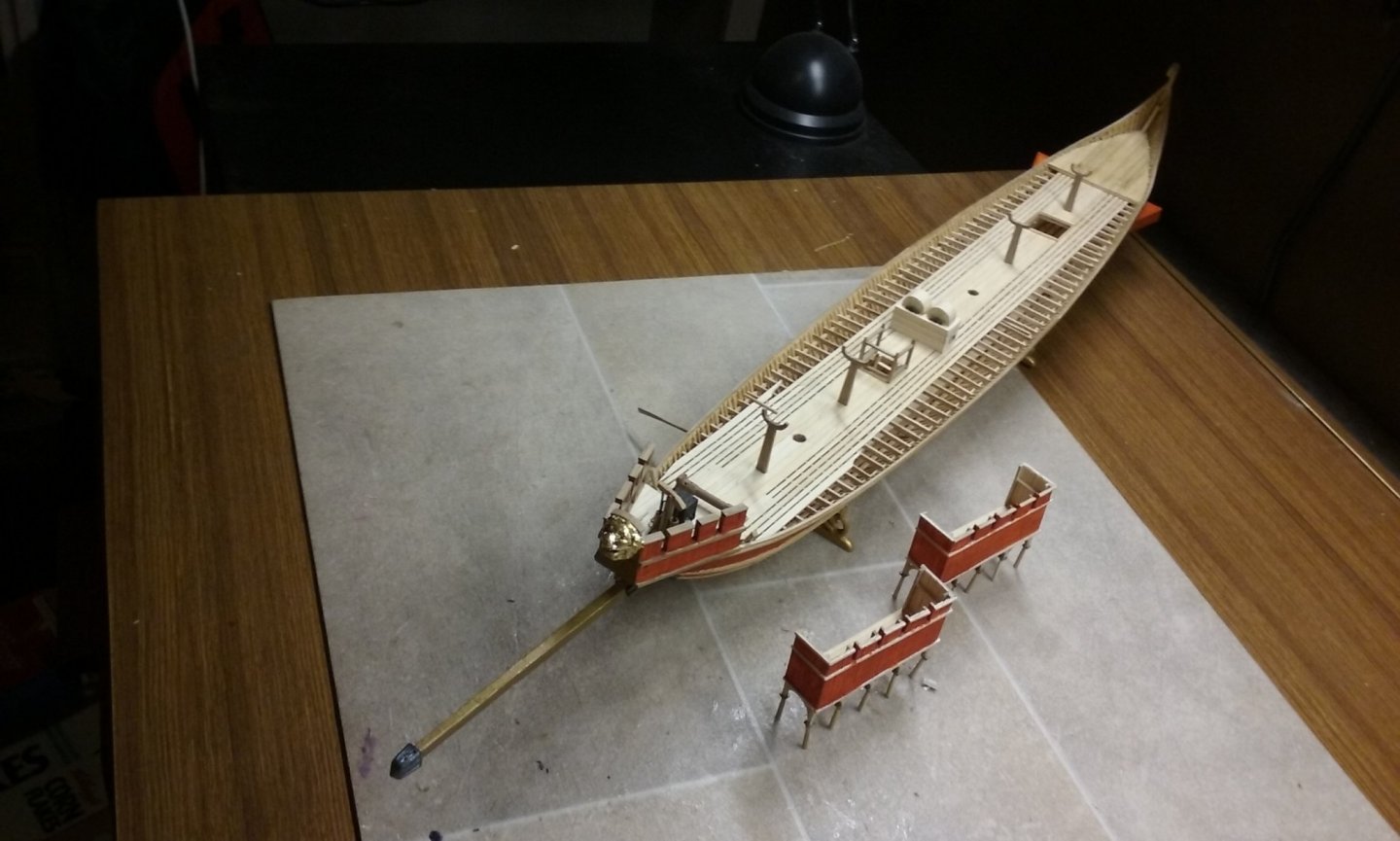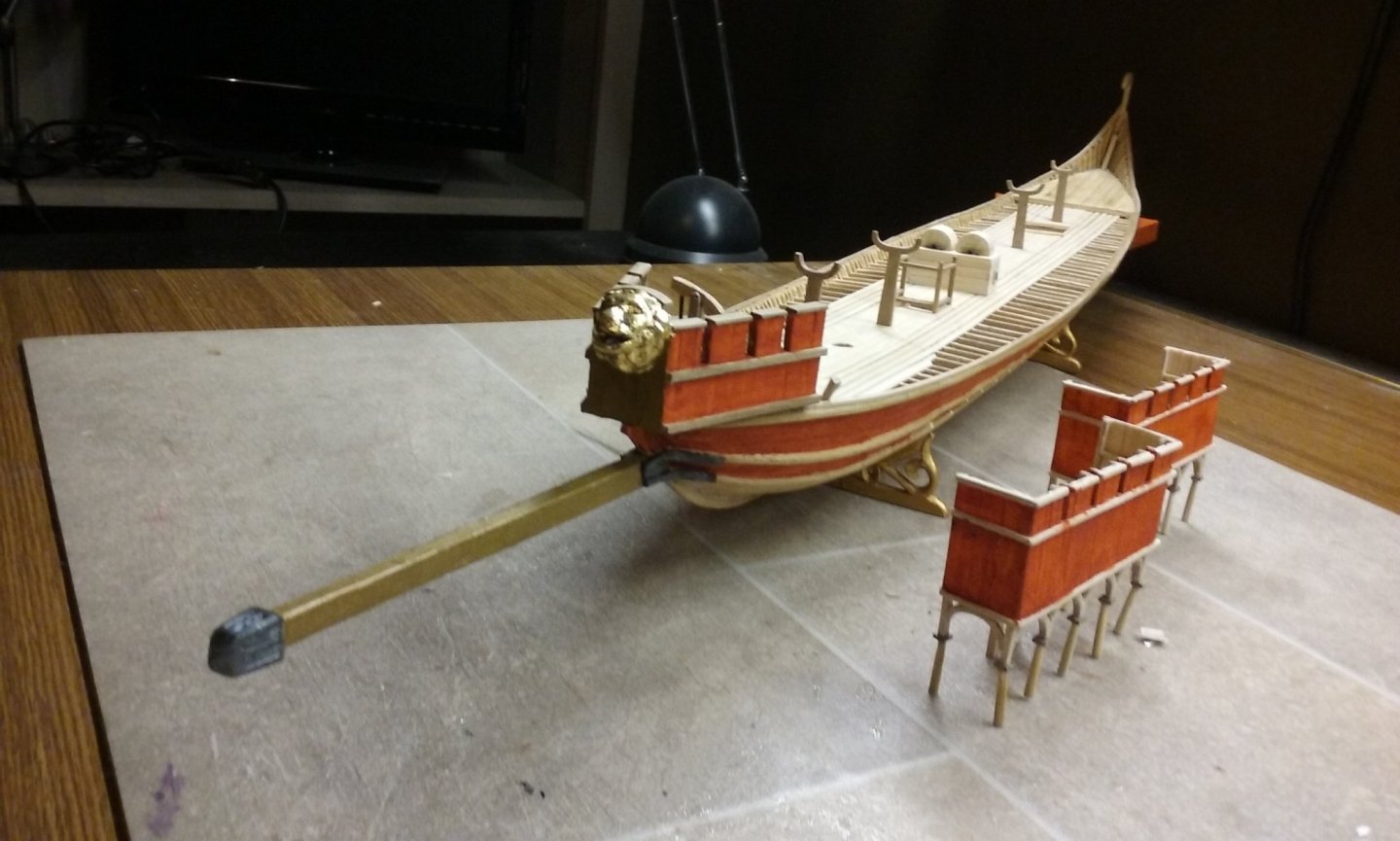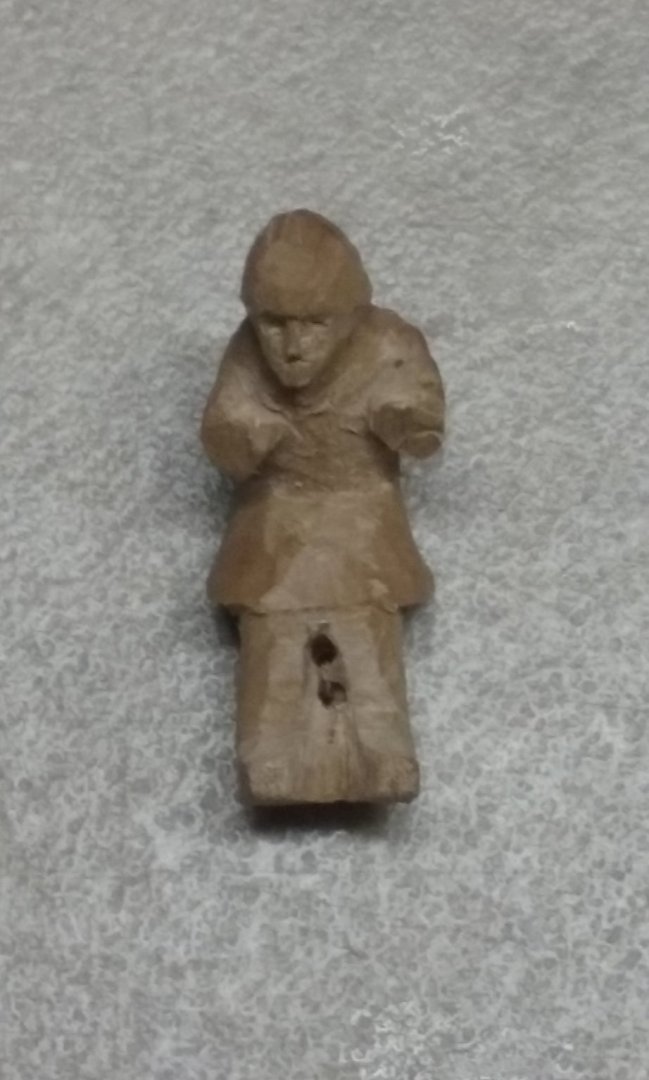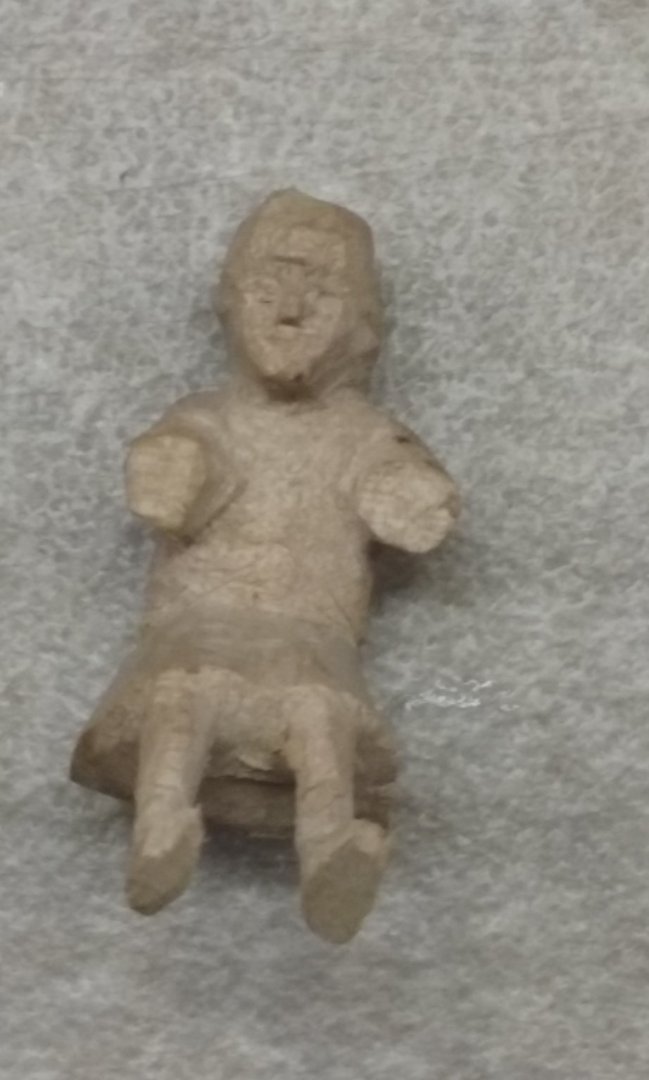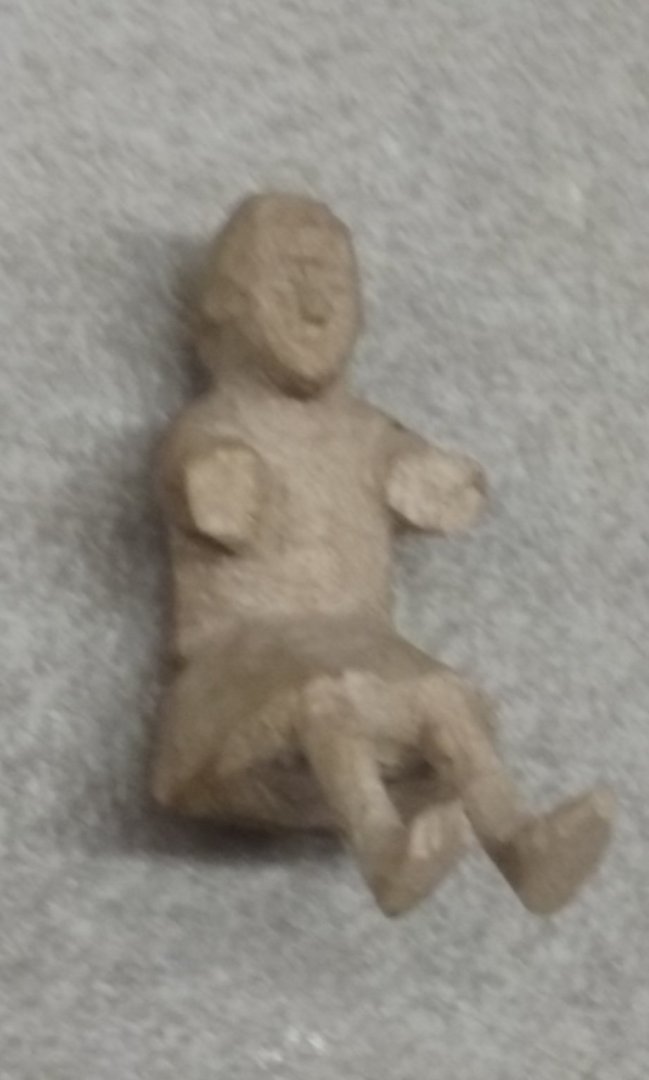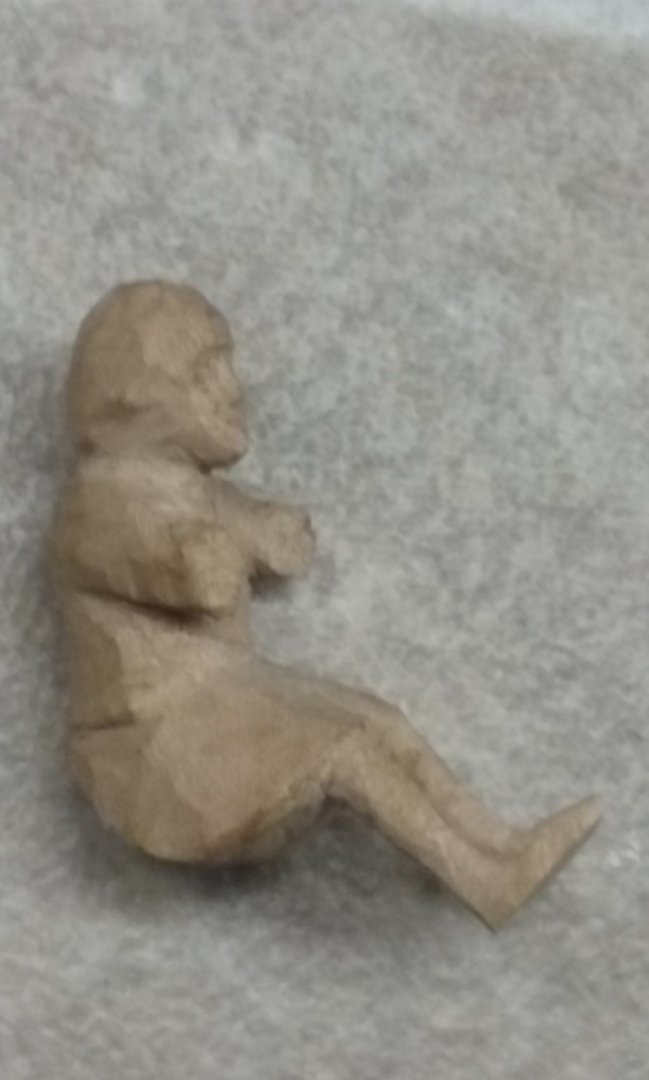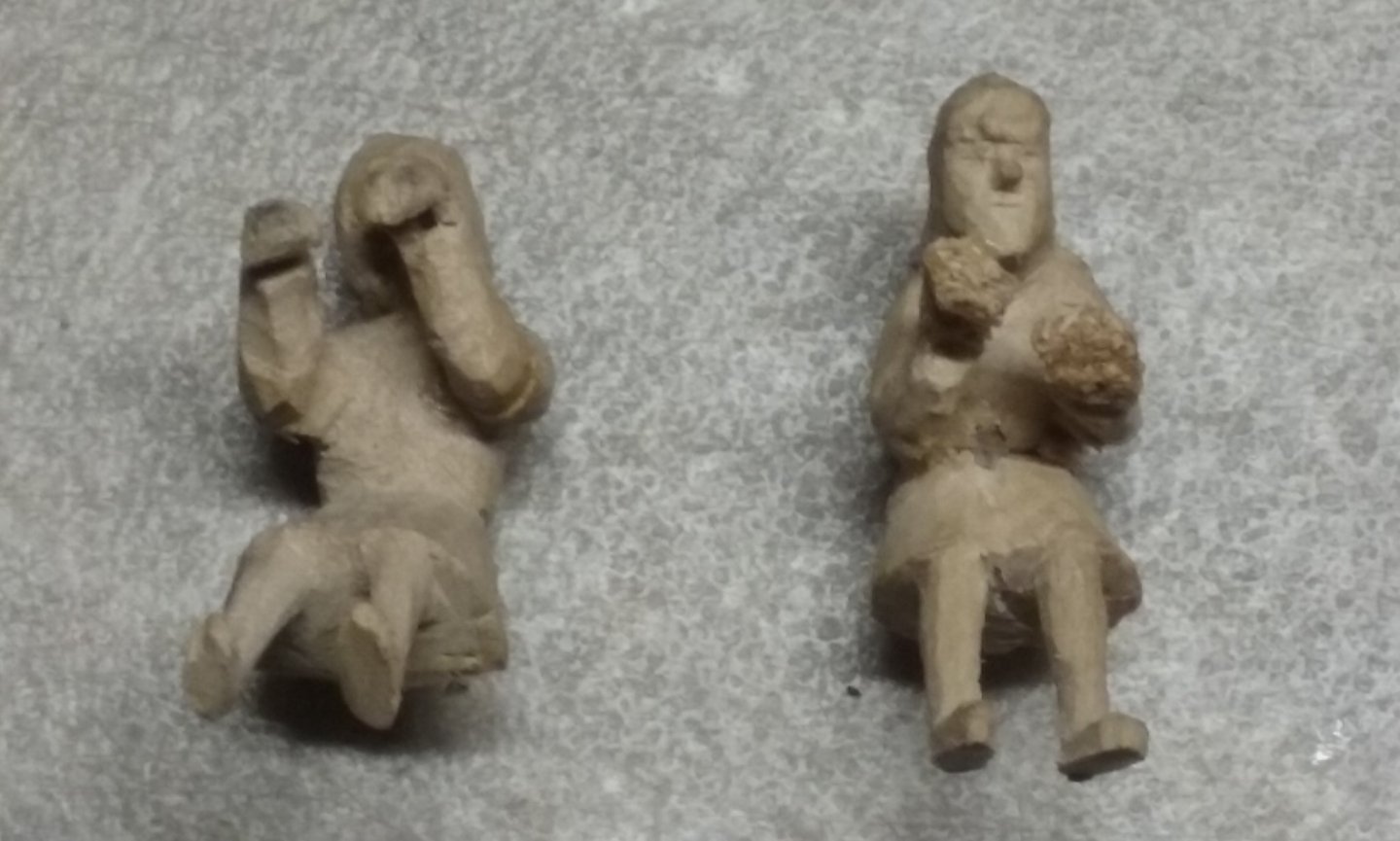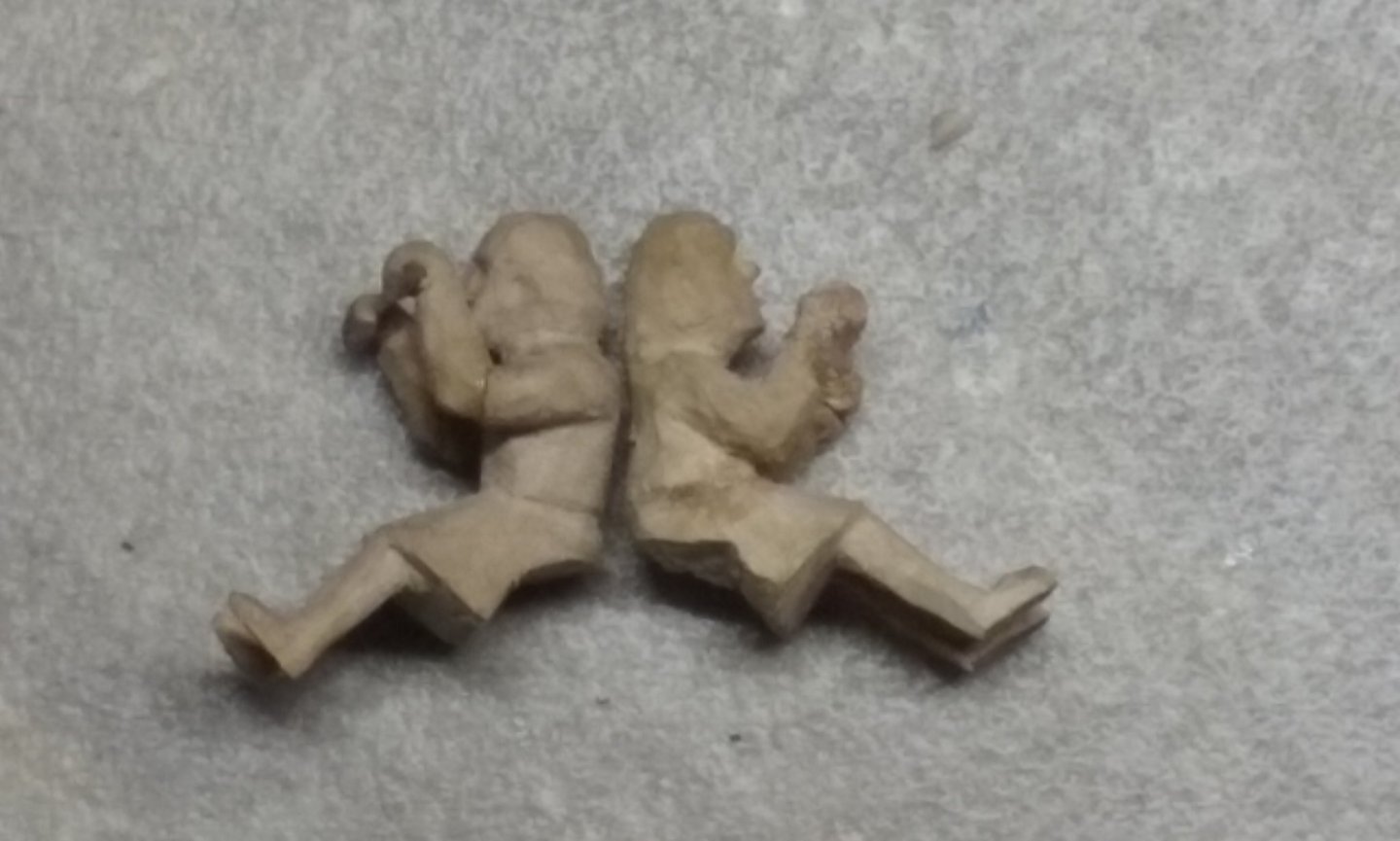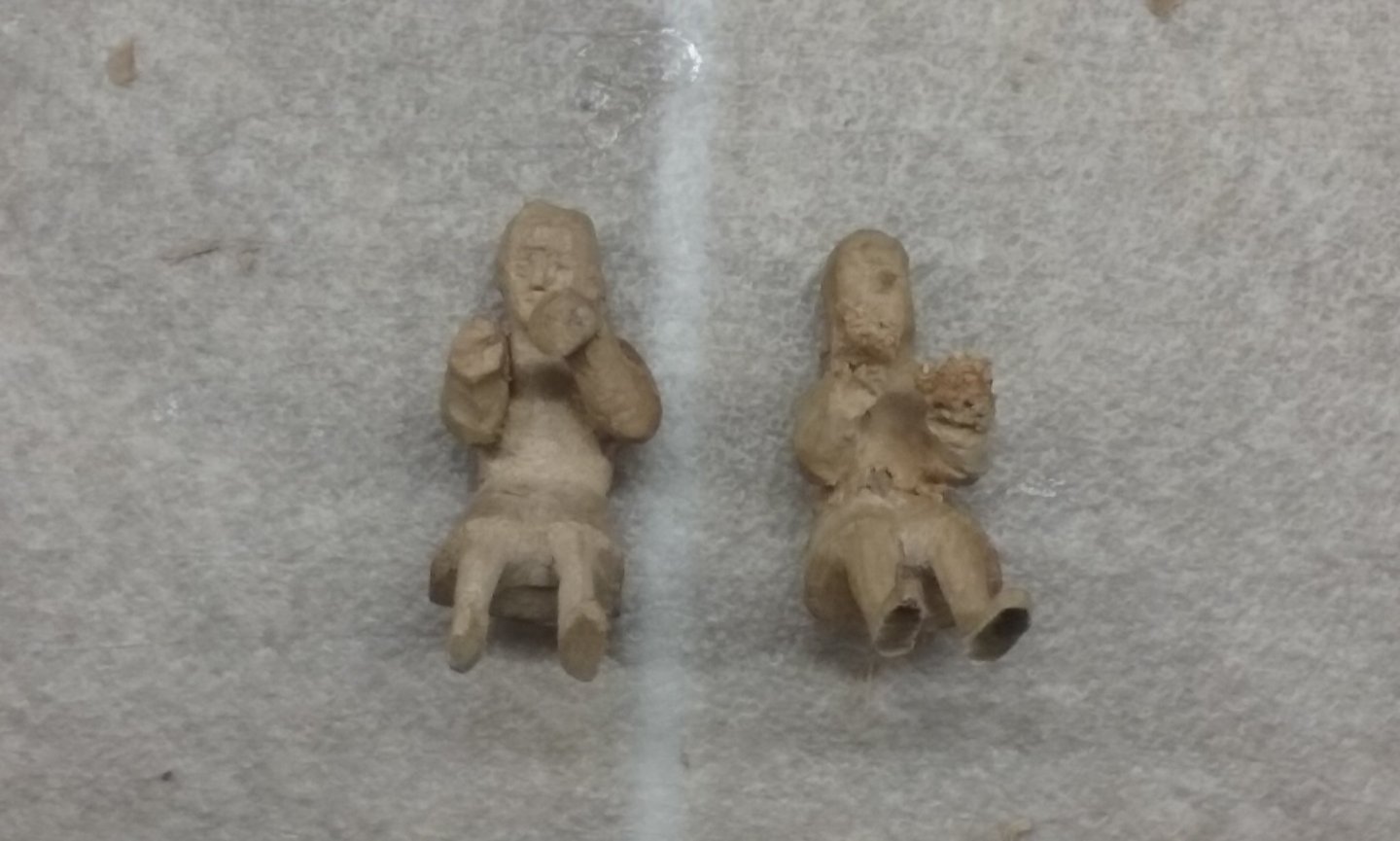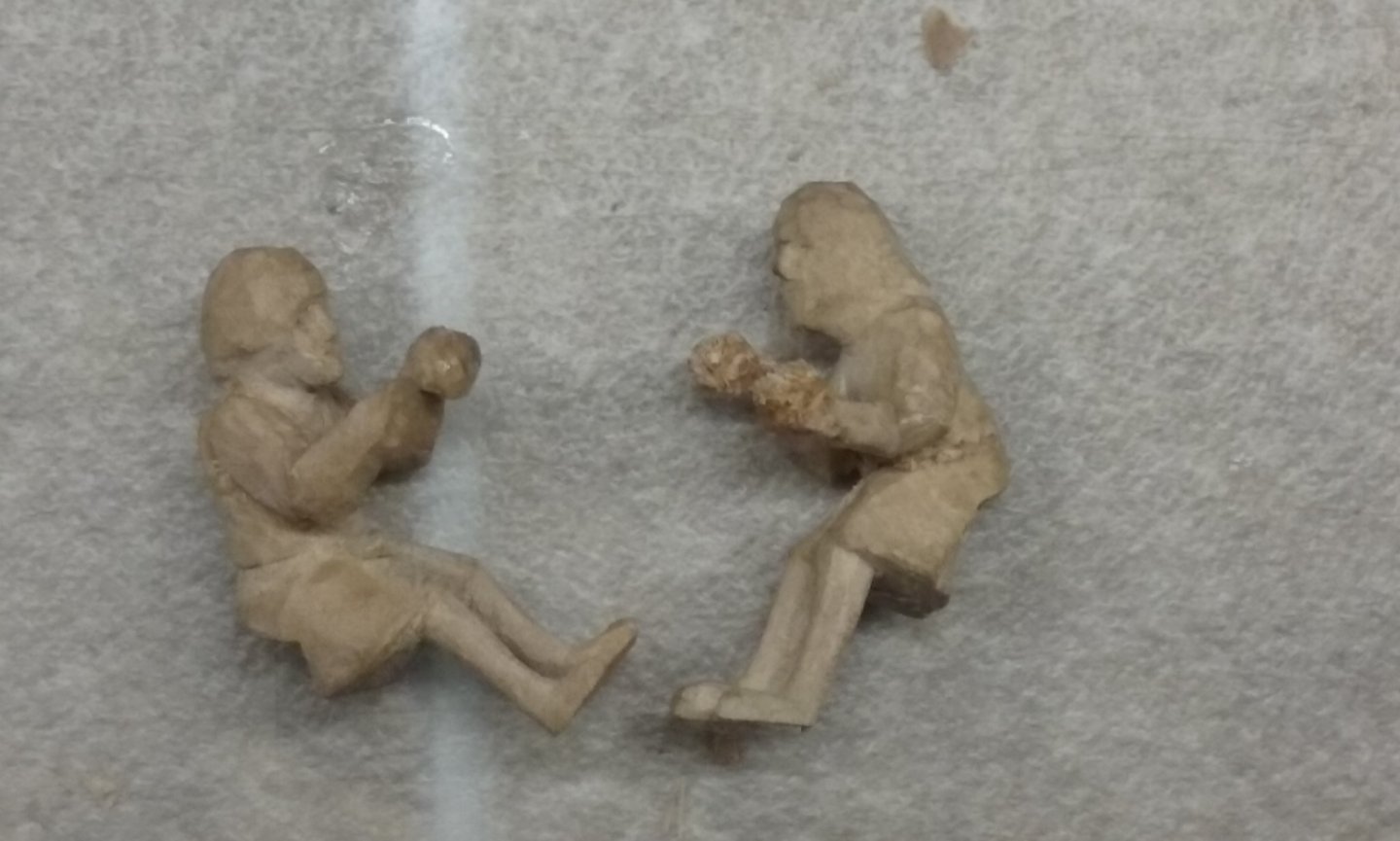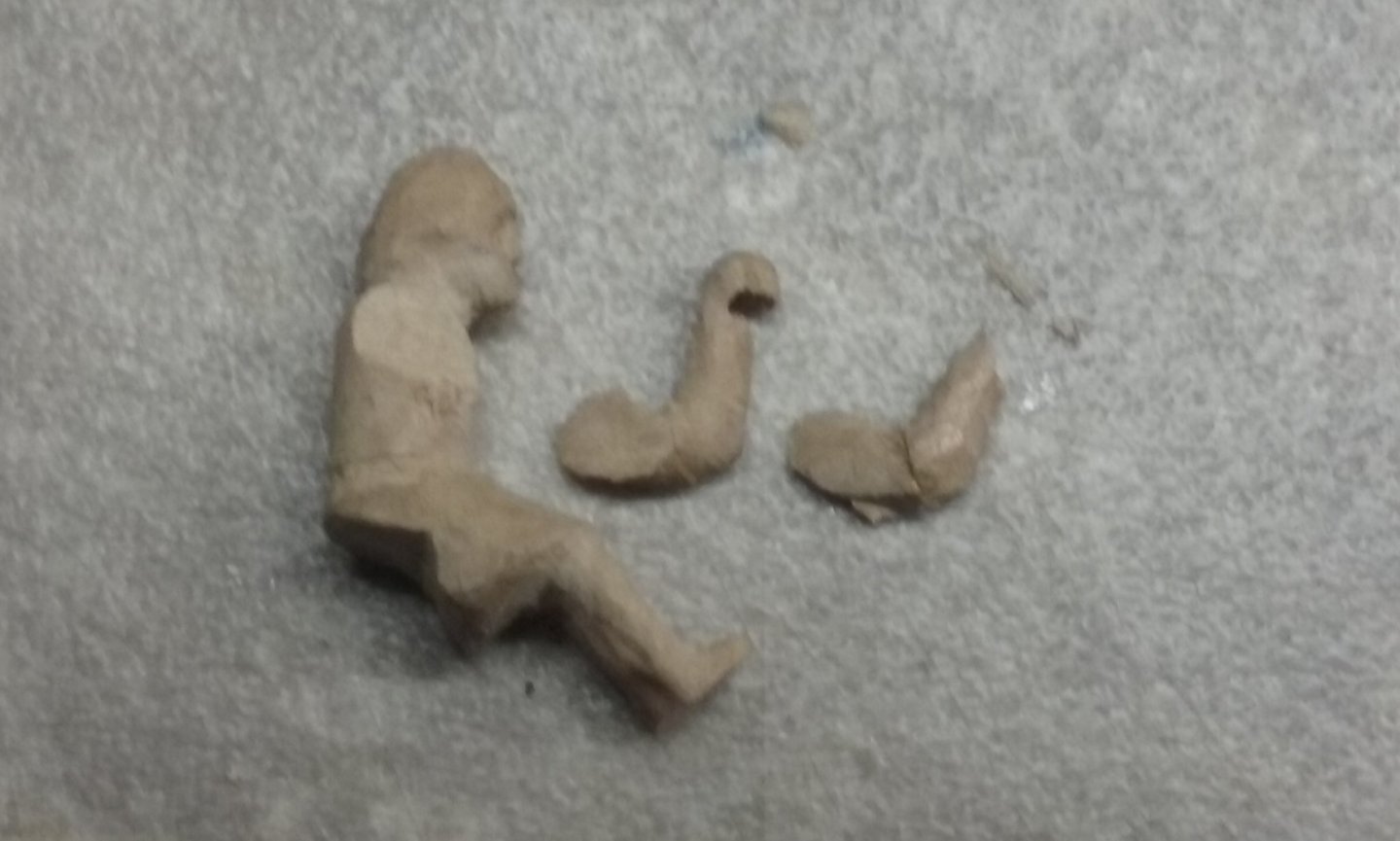-
Posts
7,986 -
Joined
-
Last visited
Content Type
Profiles
Forums
Gallery
Events
Everything posted by Louie da fly
-
That's a pretty amazing machine, Richard. I was hoping to do a similar thing on my dromon model in the early days of the build, but I just don't have the mechanical skills and I gave it up as a bad job. However, as I'm putting little guys on my model I studied what the oars did in the video of the full size ship's sea trials, and I found it was quite different from some of the oar motions I've seen on video of other mechanised model galleys. I'd be interested to know if the motion of the oars on your model ties up with what's seen on the sea trials. Steven
-
I'm very impressed with what you're doing and what you have in mind. Good to see someone doing all that research and tweaking a kit to get it closer to the way the ship really was. I'm also a big fan of the Ringerike style. There's quite a bit of it around. The only suggestion I'd make is to add a few more "fiddly bits" (like those red tendril thingies) if you can fit them in somehow. Ringerike was a very complex style, full of decorative extras, and your figurehead just looks a little too sleek at the moment. I'd be a bit careful about relying on those authors; they seem have a few of their facts wrong. Harald Hardrada/Sigurdsson wasn't an admiral - that position was reserved for Byzantines. He was probably the leader of the (Viking) Varangian Guards during his time in Constantinople, though as far as I know there's no actual mention that he held the position of akolouthos, which would have been his title if so. He came home with a gold-hilted sword, which privilege was supposedly reserved for the rank of protospartharios (I think - relying on memory here), and he appears to have been the leader of the Varangian contingent in the Byzantine army that invaded Sicily. His sea-going experience would probably have stood him in good stead with the Byzantines, but they were very wary about giving foreign mercenaries positions of power or high rank. He or his followers may have brought back some ideas on ship design when they returned home, but I can't think of anything in Viking ships that is evidence of that. However, I'm no expert on such things - maybe they're right. Similarly, the suggestion that the Skuldelev ship was somehow connected to Harold Godwinson seems to me to be pure speculation, unless they have some facts to back it up. I like the darker stain - I think it's probably the color the ship would have been after a few years of service. Coming along nicely. Steven PS: Nikiforos, I agree about the lack of worthwhile model kits from earlier periods. But you can always come over the the Dark Side and scratch build your own . . .
-
Oh, nice. One of my favourite vessels of all time. I've re-looked at the video of her sea trials time after time. But how many oars are you going to have to make? About 150? It takes a special kind of insanity to make a model of a galley. But you're doing an amazing job with her. I'm very impressed. Steven
-
Those strakes look much better, Binho. Yes, it does look a lot like the stern of my dromon - I wish I'd put more time into designing those stern strakes; they just didn't work properly, tapered the wrong way - got wider toward the stern instead of narrower. Still, I decided to regard it as a learning experience . . . I like your oars. I carved mine all by hand, which was very laborious; I've tried making cylindrical shapes with the drill, but never had much success. Interesting speculation about the Byzantine influence on Viking ships. Certainly there's no mention of it in any of the contemporary written sources. Personally I think it's unlikely - the Vikings had a design that worked very well and I believe the changes in shape were probably just normal evolution of design. Though Vikings were serving in the Byzantine army in the 10th century, it was only as javelin throwers; as far as I know there's no mention of them involved in any naval activity there at that time (though they certainly did in the following century). Steven
-
I'm currently restoring a (scratch) model I made when I was 17, started to change, and then left to deteriorate for 40 years. Because I wanted to change the hull shape (the stern was too wide) it ended up more as a rebuild. I'm a fair way through it and I intend to complete it come what may, but I really wouldn't recommend it, from grim personal experience. The only reason I'm doing it is that I feel it deserves to be finished after all this time. If you're not happy with the result of your kit and you want to make it better, I'd recommend you buy a new one rather than pull it apart and rebuild. Steven
-
Working on the decoration of the xylokastra (wooden castles). I've looked at various examples of Byzantine decoration - from the great church of Hagia Sofia in Istanbul (I took these photos when I was there in 2000) All very beautiful, but I think just a little too difficult; Instead I took a motif from a staurotheque (relic of the True Cross), plus a bit of the simpler border decoration from Hagia Sofia and here's the first xylokastron - because of the colours I started with, I've swopped the colours around a bit; The second one is under way - I have to wait for the paint to dry before I can continue with it. I'm not terribly happy with the precision of the "T" shapes in the border - I'm thinking of getting another, finer paintbrush. Even though the one I have is pretty fine (it's a watercolour "00", with a nice fine point), I seem to keep getting blobs, or going over the line at the most inopportune times, which messes up the pattern. I think the brush is too long - it sort of "flops" just as I'm trying to finalise a shape, and perhaps a shorter brush with the same fine point would be better. On the other hand, maybe it's just a matter of keeping my hand still. Masking at this level of detail just doesn't seem practical. Steven
-
A beautiful bit of detail work, Dick! Steven
- 263 replies
-
- nave tonda
- round ship
-
(and 2 more)
Tagged with:
-
No problem, Christos. I appreciate the recommendation. I may find it useful in a later build. Steven
-
Thanks Christos. And thanks everybody for the likes. Perhaps if I need to paint another ship to represent pitch I'll try that. Certainly where one is able to discern the colour, ancient and mediaeval Mediterranean ships all seem to have been black with very few exceptions,which I believe indicates they were coated with pitch for waterproofing. Steven
-
Painting the hull below the waterline black to represent pitch. Two coats of enamel - more a charcoal than a pure black, which I think would look wrong. It'll take two days for the paint dry properly, then I'll start on the yellow for the wales, "tail" and other trim. Steven
-
I'm nearly finished on the stern; in fact I've gone as far as I can until the bottom planking is done. Love these new clamps! (For Aussies, these are available at Officeworks very cheap, and have a very light grip so they don't warp anything. Oh, and they don't get stuck to the glue like my wooden miniature clothes pegs). Added the sternpost. I'm always a bit undecided how far to take things - do I make it the same as I would have when I was 17 and iggerant, or upgrade to my current state of iggerance? Usually I do a bit of each - for example, except for the sternpost the keel is in one piece, rather than made in bits like the originals. I've also cut out the arched hole for the tiller. Unfortunately you can see the balsa crosspiece of the frame behind it. So I added another crosspiece below it and cut a hole in the first one for the tiller. Still a bit of tidying to do. Here she is upside down. You can see the added balsa crossbeam and the original crossbeam with a central cut-out just behind and to the left of the number 3. And looking through the arch. The crossbeam of the aftermost frame has had the hole cut in it, but you can see through to the next frame's crossbeam behind it. Naturally that won't be visible unless you look very carefully with your eye up against the hole. Looking aft past the frames you can just see daylight through the cut-out in the crossbeam and the tiller arch. And added more planking and the bottom wale (which still needs to be trimmed to length). Next is to make the few cannons I'm putting on this model. I have yet to close up some more of the gunports I don't want open so I don't have to make too many cannons. Then I can close her up with bottom planking and upper deck. Steven
- 740 replies
-
- Tudor
- restoration
-
(and 4 more)
Tagged with:
-
Finally got some paint that is the colour I wanted to use for the dromon's hull - basically a red ochre, which would be the source of the tint in red paint at the time . I'm using enamel (Humbrol) because I've found that a tiny bit of PVA glue under acrylic paint seems to mess up the finish. This is the first coat. The trim will be yellow ochre, and the bottom will be black (the colour of pitch). Normally Byzantine ships are shown as black all over in contemporary pictures, but the Emperor's ship is shown as red with yellow trim. I haven't decided yet whether to paint the sternpost and "tail" yellow or red. Once the painting is all done, I can put the lower oars into place and then finish off the deck (I need it open for the time being so I can see where to glue the oars). And then I can put all the deck items in place that I've been holding off from, add the upper oarbenches and the side castles and the awning at the poop, insert the masts etc etc. Steven
-
Of course! How could you think otherwise?😉 Not a bad idea, but I think it might be a little too stiff for the job - it could crumple rather than follow the shape I want. The Easter-egg foil seems to have just the right properties for the job - enough stiffness, but still flexible enough to get the shape right. Steven
-
I like the perspex brackets 😉. Should keep everything nice and square. Looks like you've hit the ground running! Steven
-
No, I hadn't thought of that, but they're fairly constrained by having to hold the oars so the blades will be at the same level as those of the lower bank. On the other hand, I'm thinking of making, say, 5 different figures for each side (10 in all) cast in resin from these two originals, and then give them different details of hair, beard, face etc and re-cast 5 of each so we end up with a bigger mix of people - not unlike the way the Entombed Warriors were made with mass-produced bodies and individual heads. I can paint the tunics and hair different colours (though dark hair will of course predominate) to add to the variety. Still thinking it through . . . Steven
-
It's always worth following your builds, Dick. Such a wealth of research, and (very) convincing speculation on "how it must/may have been" when there's a gap in the available information. Steven
- 263 replies
-
- nave tonda
- round ship
-
(and 2 more)
Tagged with:
-
Yes, Dick. I'm thinking of making them of thin foil (from Easter eggs) as I did with the big banner. They seem to have about the right modulus (I think that's the first time I've ever used that word outside the science classroom!) of stiffness and flexibility, but I'll find out when I try it. Steven
-
Nope. Almost certainly radiata pine - a pretty inferior timber also known as Monterey pine, originated in America but has become the most common building timber in Oz. Where do you live, Peter? In Ballarat, where I am, a lot of people have fruit trees. The people either side of us both have pear trees, and I've been able to get smallish branches from them when they trim the trees. I also follow the Council tree loppers around and have got hold of plane, ash, elm, oak and walnut (the last one was from the neighbour's tree which died - score!) You might be able to get in touch with commercial tree loppers and see if you can get pear wood from them. Only problem is that you'd then have to wait for it to season - about 12 months for each 25mm thickness. How much do you need? And in what sizes? Steven
-
Beautiful work as always, Dick. The straight central section looks a little strange at first sight, but that's removable, for loading cargo, isn't it. Steven
- 263 replies
-
- nave tonda
- round ship
-
(and 2 more)
Tagged with:
-
Not really - I've tried it but it never seems to give the precision and detail I want, and wood stays where you put it, unlike modelling clay. I've used it (well, plasticiene, actually) to work up a rough idea of what I want to do, but I find wood is better for the final model. And anyway, I like carving ☺️ Modelling wax is easier to carve than wood but less forgiving if you make a mistake. You can't add a bit of filler to cover it up. I've bought some sculpy but haven't got around to trying it. Steven
-
Here is the oarsman with his arms broken off and his legs started to be shaped. Legs done, and ready to glue the arms back on. (Sorry about the photo quality.) I glued the arms on, and checked the new guy against the one I'd already done. Then it became obvious that the new guy's hands were higher up than the old one's, not because I'd glued them on too high but because I'd carved them that way. Time to get clever - I sawed off the arms at the shoulders and re-glued them to be as close as possible to a mirror image of the arms on the other oarsman. A lot of mucking around, but I think I've finally got it right - except that I now have to carve a new right hand - the arm fell on the floor when I sawed it off and the hand split off, never to be seen again . . . sigh. Steven
About us
Modelshipworld - Advancing Ship Modeling through Research
SSL Secured
Your security is important for us so this Website is SSL-Secured
NRG Mailing Address
Nautical Research Guild
237 South Lincoln Street
Westmont IL, 60559-1917
Model Ship World ® and the MSW logo are Registered Trademarks, and belong to the Nautical Research Guild (United States Patent and Trademark Office: No. 6,929,264 & No. 6,929,274, registered Dec. 20, 2022)
Helpful Links
About the NRG
If you enjoy building ship models that are historically accurate as well as beautiful, then The Nautical Research Guild (NRG) is just right for you.
The Guild is a non-profit educational organization whose mission is to “Advance Ship Modeling Through Research”. We provide support to our members in their efforts to raise the quality of their model ships.
The Nautical Research Guild has published our world-renowned quarterly magazine, The Nautical Research Journal, since 1955. The pages of the Journal are full of articles by accomplished ship modelers who show you how they create those exquisite details on their models, and by maritime historians who show you the correct details to build. The Journal is available in both print and digital editions. Go to the NRG web site (www.thenrg.org) to download a complimentary digital copy of the Journal. The NRG also publishes plan sets, books and compilations of back issues of the Journal and the former Ships in Scale and Model Ship Builder magazines.




